Welcome to the Fiddle Leaf Fig Plant Resource Center
Welcome to the Fiddle Leaf Fig Plant Resource Center Read More »
Welcome to the Fiddle Leaf Fig Plant Resource Center Read More »
A study on indoor plants and air quality shows fiddle leaf fig plants could help remove 97% of cancer-causing toxins in your home.
Indoor Plants and Air Quality: Fiddle Leaf Fig Plant Benefits Read More »
Indoor plants have always been natural air purifiers, with countless anecdotes from home growers reporting a lessening of their allergies and sinus problems when they fill their houses with plants. But is there a real correlation between indoor plants and air quality, or is it just all talk?
According to recent studies from NASA and the University of Technology, Sydney, there may be much more to this than mere anecdotal evidence. Learn how to improve indoor air quality with plants like the fiddle leaf fig for better health and wellness at home.
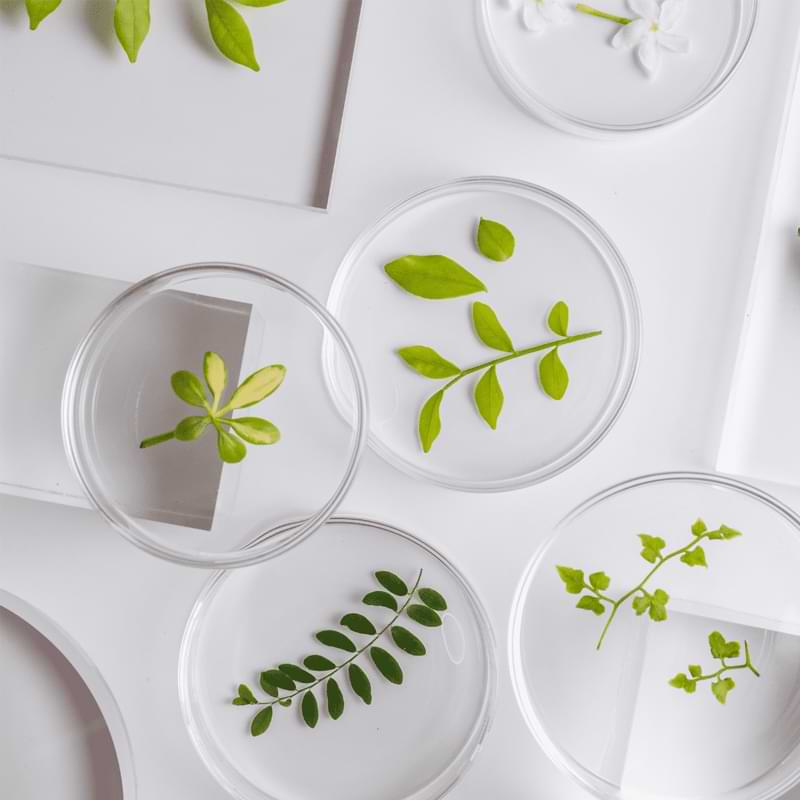

The journey towards uncovering the connection between indoor plants and air quality began in 1989 when NASA conducted the Clean Air Study. During this study, scientists tested a variety of common houseplants to determine their ability to purify the air by removing cancer-causing toxins such as benzene, formaldehyde, and trichloroethylene.
To everyone’s astonishment, the results showed that certain species of indoor plants were highly effective at removing these harmful chemicals from the air. And one of the top performers? Ficus plants, which include the fiddle leaf fig.
Furthermore, the analysis showed plants had better trichloroethylene, formaldehyde, and benzene removal within a confined space than anything NASA could engineer. In fact, research was rather positive for ficus plants when it came to air-borne formaldehyde, a compound it uses in its metabolism.
More recently, a University of Technology, Sydney study looked beyond the effect of indoor plants on benzene removal, focusing on cancer-causing toxins released from VOCs, gasoline, and caustic substances. The study found that indoor plants can help reduce the levels of these toxins, further supporting the idea that fiddle leaf figs and other houseplants can positively impact indoor air pollution.
The study also found that the dozen indoor plant species used removed 97% of cancer-causing toxins from the air. This evidence highlights the potential green wall benefits of plants in urban areas where indoor air pollution is often a significant concern.


It surprises many that indoor air pollution is up to 2.5 times worse than outdoor air. This is due to a combination of factors such as:
These causes vary in the toxins they release, with some creating high levels of formaldehyde or benzene while others release VOCs. Regardless, the presence of these toxins can lead to several health issues, including:
Knowing whether or not these symptoms result from indoor air pollution isn’t always obvious, but there are ways you can check. The easiest way is to have your indoor air tested, but you can also look out for some common signs of poor air quality, such as:
If any of these signs apply to your home, it may be time to get some Fiddle Leaf Fig soil and start growing your own plants.
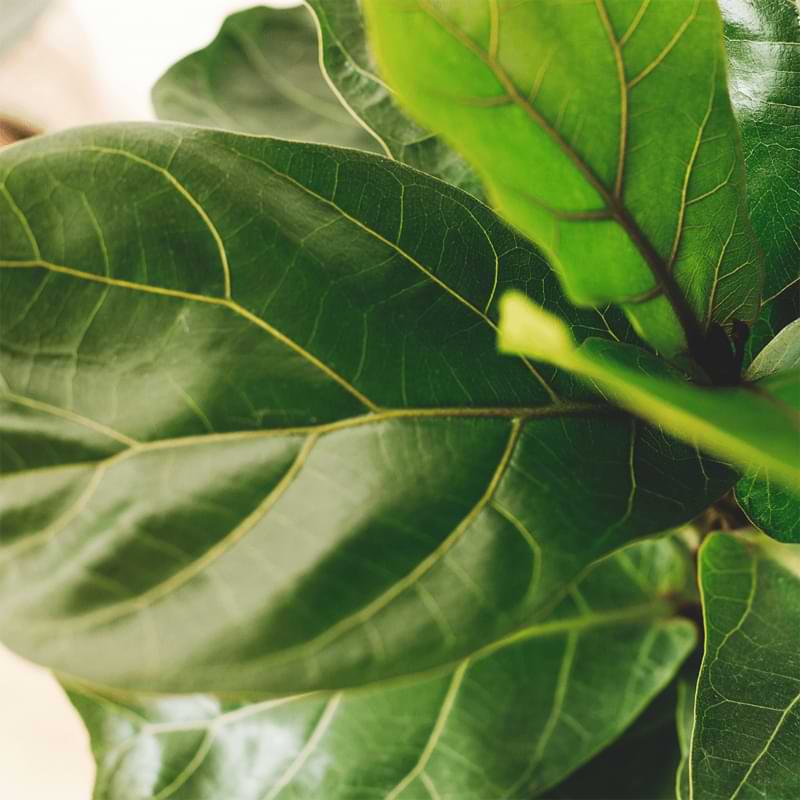

Both the NASA and University of Technology, Sydney study used multiple species of plants to determine their air purification abilities. So why did the ficus perform so well, and what does that mean for indoor plants like the fiddle leaf fig within its family?
The secret lies in the photosynthesis process. Typically, plants with larger leaves can photosynthesize at a higher rate, absorbing more sunlight and carbon dioxide to produce oxygen.
Because ficus plants, like the fiddle leaf fig, have large, broad leaves, they can take in more carbon dioxide and release more oxygen into the atmosphere. As a result, they can also take in more air pollutants and break them down through a process known as phytoremediation.
But it isn’t just the leaves that make the fiddle leaf fig a great cleaner. The large amounts of cancer-causing toxins the plant absorbs are filtered down through its roots into the soil, where beneficial bacteria and microorganisms break it down into harmless compounds. This allows the plant to thrive and contributes to consistently cleaner indoor air.
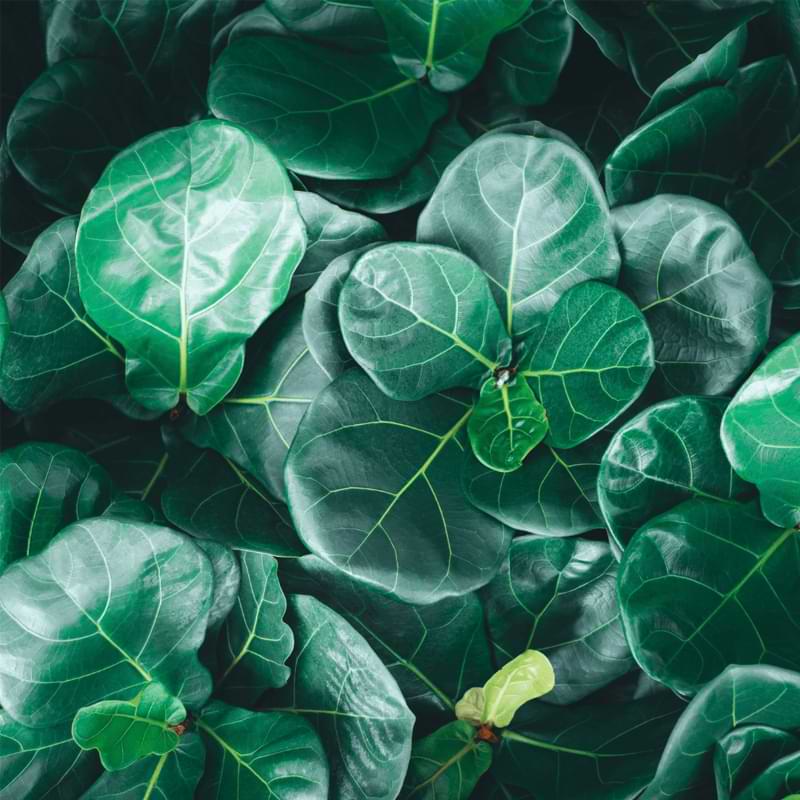

With all the science and evidence backing up the benefits of indoor plants for air quality, it’s no wonder that more and more people are incorporating them into their homes. But how can you get started?
Growing fiddle leaf fig plants from soil is pretty simple, provided you maintain the optimal climate conditions. If you don’t live in the right environment, don’t worry! The Ultimate Fiddle Leaf Fig Care Bundle can help you create the perfect environment for your plant to thrive.
See what makes specialty Fiddle Leaf Fig soil ideal for growing air-cleaning houseplants.
Don’t have the time or space to grow a fiddle leaf fig from seed? No problem. With my favorite propagation promotor, sharp pruning shears, and healthy fiddle leaf fig cuttings from a mature plant, you can grow your own fiddle leaf fig for improved air quality.
Already have a ton of plants spread around your house? Consider starting a green wall with fiddle leaf figs and some of your favorite air-purifying plants. Not only will this help clean the air in your home, but green wall benefits also include a touch of beauty and charm to any home.
Research from NASA and the University of Technology, Sydney studies, suggests that having just one indoor plant every 100 square feet can significantly improve air quality. Considering that a one-bedroom home ranges between 550 to 1000 sqft, that would mean having 5 to 10 plants for optimal air purification.
While it may seem like a lot of plants, the truth is that their presence helps in more ways than one in improving air quality. For example, large-leaf plants like the fiddle leaf fig attract dust and other particles on their leaves, helping to remove them from the air. With all-natural and gentle leaf shine wipes, that dust will be gone in no time, leaving your plants looking healthy and beautiful while improving the air quality in your home.


If you don’t have the space for several mature fiddle leaf fig plants, consider grouping other smaller plants, such as pothos, orchids, and spider plants, to experience air-purifying green wall benefits. These options are easy to care for and have proven effective indoor plants for benzene removal.
Any houseplant, including fiddle leaf figs, will be useless in its air-purifying abilities if it isn’t well-maintained. Here are my top tips for keeping your indoor plants healthy and improving your home’s air quality:
Finally, keep humidity and temperature levels around the plant high. The fiddle leaf fig loves environments that average 55 to 75 degrees Fahrenheit with at least 50% humidity.
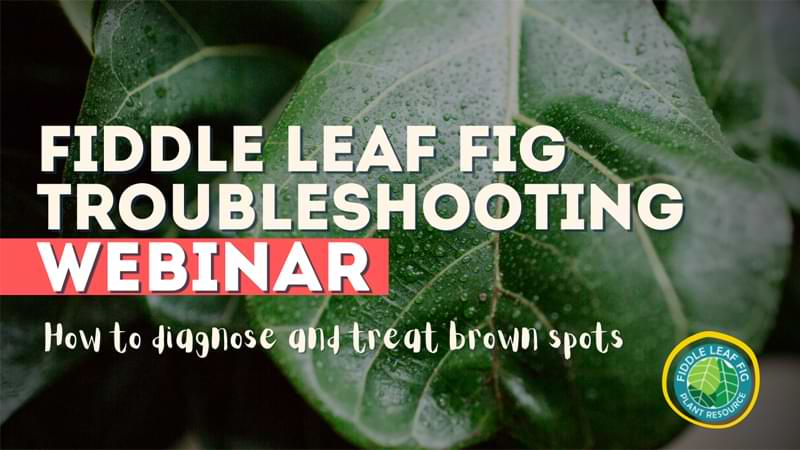

Studies have shown that indoor plants remove cancer-causing toxins within 24 hours of placing houseplants indoors. However, it is recommended to have multiple plants to experience the same health benefits as green walls in homes as used in the University of Technology, Sydney study for optimal results.
While all houseplants have some level of air purification abilities, not all are equally effective when it comes to formaldehyde or benzene removal. Choosing plants that have been studied and proven to effectively remove toxins from the air, such as fiddle leaf figs, pothos, orchids, and spider plants, is recommended.
Yes, indoor plants require sunlight to carry out photosynthesis and purify the air. However, too much direct sunlight can also harm the plant’s air purification abilities, so be sure to find a balance for the best results.
With evidence from NASA and the University of Technology, Sydney study showing the green wall benefits of indoor plants, there is no better time to start growing fiddle leaf figs. From less dust to reduced cancer-causing toxins, these plants provide numerous benefits that keep you and your home healthy.
Need help maintaining optimal indoor air quality with fiddle leaf fig plants? Sign up for our newsletter to never miss an update on keeping your houseplants healthy and thriving. Happy growing!
Master holiday care for fiddle leaf figs! Get expert tips on potting, watering, and lighting. Keep your figs lush during the holidays. Click for more
Holiday Care For Fiddle Leaf Figs: An Essential Plant Care Guide Read More »
Learning how to care for your fiddle leaf fig tree requires you to conduct a few basic protocols that can allow your plant to thrive over time.
Whether you’re looking to maintain fiddle leaf figs for the holidays or going away for the holidays and want to make sure the plants thrive, there are some things you can consider in caring for your plants.
Fiddle leaf figs are versatile plants to keep in the home that don’t demand strict maintenance to sustain them. Getting the right nutrients and the best soil for fiddle leaf figs is essential to keep them healthy.
They are great to have in the home and can provide you with plenty of oxygen with accurate growing conditions.
This article further explores holiday care for fiddle leaf figs to maintain and sustain their plant growth, even when you’re gone for a few days.
Taking care of fiddle leaf figs for the holiday season can provide your plant with a vibrant appearance for all your guests coming over for the holidays.
These are some of the ways you can care for your plants to ensure they thrive for the holidays. Properly caring for fiddle leaf plants and providing the best soil for fiddle leaf figs can improve proper drainage as well.
Learn more about Pruning and Shaping Your Fiddle Leaf Fig Plant
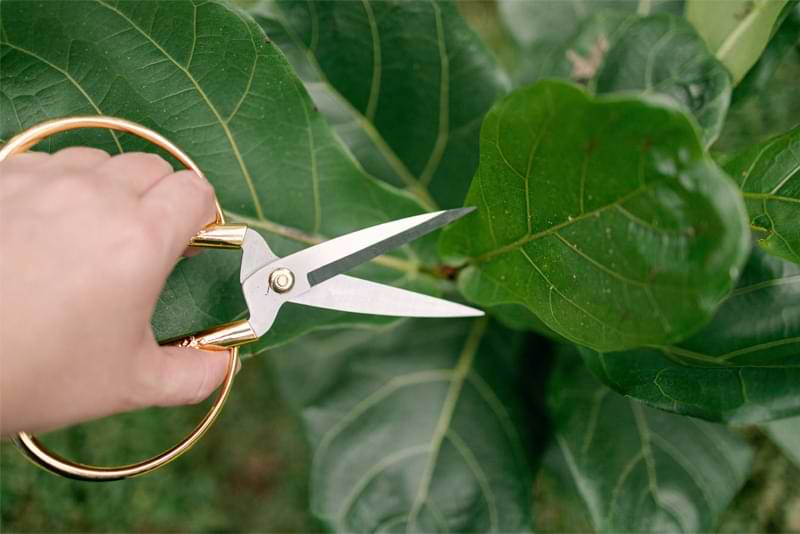

For those who are going away for the holiday season, there are different precautions to take to make sure the plants maintain their health while you’re away.
Make sure to place your fiddle leaf figs where they won’t get direct sunlight but receive indirect sunlight. It is best to place the plant directly in front of and up against your brightest window. If direct sunlight hits the leaves, a sheer curtain can turn the light indirect.
Another way to get automated light onto your plants is to set up a grow light with automated timing sequences. The plants can receive light at a specific duration without you being home.
You can automate the watering by using a water globe that has a long stem. The stem of the globe extends far for you to place within the soil. The water inside the globe drips in the soil over a certain period which can make it easy for your plants to receive water by themselves.
You can also use a wine bottle by placing water inside and then covering your thumb over the mouth. You can place it in the soil while covering the mouth with your thumb. Let go once it’s inside then wait to see how much water drains over time.
If these methods aren’t ideal, you can use an automated drip system and set it up before you go on your holiday trip.
This way your plants receive enough water while you’re away during the holiday season and can hold their green luster for a few weeks. They can even hold their beautiful green appearance with the best soil for fiddle leaf figs.
Your plants can receive enough humidity by placing a water-filled pebble tray underneath the fiddle leaf plant. It’s best to keep the plant’s roots away from the water and pebbles.
Ideally, the evaporation of the water gives your plants humidity for a few weeks. Also, getting a humidifier and putting it on a timer can provide your plants humidity automatically. You won’t have to worry about whether your plant is receiving enough humidity while you’re away.
If you can’t set up a proper care protocol for your plants then consider hiring a plant sitter to feed and care for it. They must be responsible and trustworthy to take care of your plants in the home while you are away for the holidays. They should also know how to take care of the fiddle leaf fig plant before you leave.
Fiddle Leaf Fig plants enjoy a warm temperate environment with moderate humidity levels and abundant indirect sunlight seeping near them.
An ideal temperature for fiddle leaf figs ranges from 65 to 75 degrees Fahrenheit or 18 to 24 degrees Celsius. The plants enjoy room-temperature water with enough nutrients in the best soil for fiddle leaf figs.
A nutrient fiddle leaf fig fertilizer can help maintain their health, especially if you’re away for a few weeks. Make sure to feed them a fertilizer with the N-P-K ratio.
These nutrients are nitrogen, phosphorous, and potassium which are great to have in a fertilizer for your plants. If using fertilizer, ensure to feed it to them once a month. If leaving for the holidays, feed them fertilizer or calibrate if they can maintain the nutrients while you’re away.
Fiddle leaf figs can go up to 10 days without water. For those leaving for the holidays, be sure to be back within 10 days or set up an automatic drip solution.
The plants are resilient and don’t require too much maintenance, but should be taken care of properly by feeding them water once a week.
Fiddle leaf figs tend to dry out faster in the winter due to the heat circulating within the household.
A good rule of thumb is to group a set of plants in one area and provide a humidifier nearby to keep the plants from getting dried out. Increasing the humidity and minimizing the water intake the fiddle leaf figs receive is essential to sustain their health during the winter months.
Keeping your plant with enough moisture and humidity can allow the plant to avoid drying out. For those of you going away for the holidays, consider these tips before leaving. If possible, keep the home from overheating by lowering the temperature before leaving.
As we mentioned above, an ideal temperature for fiddle leaf figs is between 65 to 75 degrees Fahrenheit.
Taking care of your fiddle leaf figs for the holiday can allow them to maintain their lively and vibrant leaves for years.
Knowing how to care for them for the holidays and setting up an automatic system to take care of them is essential to allowing them to thrive. Also, ensuring to provide the best soil for fiddle leaf figs can sustain them long-term.
Getting a plant sitter can also allow you the freedom to leave the home without worrying about setting up proper care systems in place while you’re away.
Sprucing up by fiddle leaf fig pruning and caring for them for the holidays can allow your guests to experience a relaxing ambiance.
Avoid overheating the home during the winter months by keeping a moderate temperature in the home or grouping all the plants in one place. Ensure to have a humidity timer in place to keep the plants from drying out, especially for those of you who are planning a trip for the holidays.
There’s a lot to consider in caring for your fiddle leaf fig plants and shouldn’t be taken lightly. Many can enjoy a beautiful vibrant plant with accurate care protocols and proper conditions.
Learn more about the Fiddle Leaf Tree Growing Guide.
Discover unique fiddle leaf fig Christmas decor within this post. Transform your Fiddle Leaf Fig into a stunning Christmas showpiece.
Fiddle Leaf Fig Christmas Decor: Christmas Fiddle Leaf Fig Decoration Ideas Read More »
This guide explores fiddle leaf fig Christmas decor ideas to enhance your holiday and the benefits it provides.
Embellishing your fiddle leaf fig plant for Christmas can enhance the ambiance of your home and set your home apart from others. It delivers an easy way to decorate any living space for the holiday celebration.
When decorating your fiddle leaf fig for Christmas, there are many ways to provide the right decor to showcase your personality and decorative style. Whether you want to add a simple bow or place small ornaments, there’s a lot you can do with your fiddle leaf fig.
Many individuals are jumping on the popular train to decorate the beautiful plant for the holiday season and it’s continuing to rise in popular trends.


You can drape candy canes at the base of each leaf to highlight the Christmas feel of the entire plant. Make sure they are small to avoid weighing down the plant or accidentally tearing it. If your plant is strong enough with height and mass, you may add larger candy canes, but make sure to test it first before adding more.
There are many varieties of candy canes with different colors and sizes. You can pick the ones that fit your Christmas style from a vibrant to rustic embellished appearance.
Another way to add candy canes is to place a handful in the soil pot and other unique decorations. It provides a fun look and an easy way to enhance the fiddle leaf fig plant for Christmas.
There are many miniature to small ornaments you can hang within your fig tree that won’t weigh it down. These can come in angels, presents, or bulb ornaments that offer a way to spice up the tree without putting too much stress on the plant.
You can place a few of them on the base of the leaves. Be careful not to add too much to minimize the weight you put on the fig tree.
Small fiddle-leaf fig trees may not hold ornaments and other decorative pieces. It’s best to ensure you know how strong your plant is and avoid weighing it down.
Many offer miniature collections from online retail stores to local stores with distinctive styles for the type of Christmas appearance you’re looking for.
Decorate the fig tree with white, red, green, blue, and gold lighting around the base or the top of the soil pot. You can also drape lighting on the top and bottom of the soil pot to brighten the plant even more.
Another unique way to add lighting is to combine a mixture of various colors allowing for a beautiful appeal on the eyes.
You can also have a lighting backdrop cascade behind the fiddle leaf fig tree to highlight it with a bright Christmas ambiance.
Lighting serves to brighten the living space of a fig tree for the Christmas holiday. Getting lighting is a simple and affordable way to add a stylish flair to the fig tree.
To add a simple Christmas style, you can add one large bow made with a thick knit fabric for quality. It can be placed in the middle of the thin trunk of the fig tree allowing for a minimalist holiday decoration.
For those looking for a more intense appearance, you can add two more bows with different colors. Make sure to space them evenly apart for an eye-catching appearance.
Another way to have a unique fiddle leaf fig Christmas decor is to embellish the soil pot with natural to vibrant decorations.
These decorations can be placed in a batch of aromatic pine cones on the soil pot near the base of the tree trunk. You can also add ornaments between the pine cones for added flair.
A good decoration is to craft a wreath on top of the soil pot with pine leaves surrounding the inner and outer edges. Add small decorative Christmas bulbs within the leaves to enhance the style further. Adorning other ornaments can also be incorporated within the wreath for added Christmas decor.
If you want to add another stylish decor for your pot, you can drape an evergreen garland surrounding it.
If you don’t need to decorate your soil pot, you can purchase a decorative Christmas-themed one. You can place your fiddle leaf fig tree within the soil pot and add other simple decorations if desired.
The pot allows you to decorate for the holiday without putting too much maintenance on decorating the tree.
These are some of the ways of how to decorate a fiddle leaf fig for Christmas that can make your holiday season vibrant.
Read more about Silk Fiddle Leaf Fig Tree Style and Inspiration.
Aside from learning how to decorate a fiddle leaf fig for Christmas, you can set it up in the best in your home. When setting up your fiddle leaf fig Christmas decor, you can place it anywhere around the home, but the best place enhances the home further.
These are some of the best places to set up the fiddle leaf fig tree for your Christmas decor.
Incorporating Christmas decor with fiddle leaf figs is relatively new and isn’t as common as you may think.
However, fiddle leaf fig trees are growing in popularity and many are adding them to their homes for a vibrant decorative ambiance.
Getting a fiddle leaf fig tree and decorating it for Christmas can become a popular way to add some Christmas decor to the home without much effort.
Decorating with fiddle leaf fig trees during the Christmas season can add a touch of natural elegance to your holiday decor.
Here are some benefits of incorporating fiddle-leaf fig trees into your Christmas decorations:
There are many ways you can decorate a fiddle leaf fig tree that doesn’t require too much effort on your part. It’s a fun way to add something new for the Christmas holiday.
Consider the ways to spice up your fig tree for the season and ensure the health of your plant for the holidays.
You can choose one of many Christmas fiddle leaf fig decoration ideas to use in your holiday season decorative style.
Learning how to decorate a fiddle leaf fig for Christmas can add a unique appearance to the home. It provides numerous benefits to the home that can set you apart from others.
Read more about getting the Best Fiddle Leaf Fig Gifts of 2023
Current plant pest control measures not working? Check out the best ways to get rid of thrips and springtails on fiddle leaf fig plants.
How To Get Rid of Thrips and Springtails On A Fiddle Leaf Fig Read More »
Learning to identify thrips and springtails in fiddle leaf figs is the first step in ensuring comprehensive plant health. But the true trick to mastering pest control is understanding what strategies to apply and when. Learn how to get rid of thrips and springtails on a fiddle leaf fig.
Thrips use their sharp mandibles to puncture the surface of leaves and feed on the plants sap within. This can result in yellowing, curling, and browning of leaves, stunted growth, and possibly death of the plant if left untreated.
Springtails, by comparison, are less damaging to the plant, but their presence implies an overwatered plant. This issue can lead to root rot, ultimately killing the plant. Additionally, springtails can overrun a plant’s pot, creating unsightly conditions that ruin the aesthetic of an otherwise beautiful home decor.
The key to dealing with a thrip infestation starts with identification. Thrips are tiny, about 1/50 to 1/25″, making them difficult to spot with the naked eye. They also live in the soil during inactive periods, creating an even more challenging identification process.
To identify thrips, use a magnifying glass to:
Ultimately, if your plant has shown fast signs of decline and the presence of any or all of these signs is noticeable, chances are you have a thrip problem.
Like human pests such as lice or bed bugs, thrips travel fast and spread quickly. For this reason, thrip-infested plants must be isolated. But isolation isn’t as simple as moving the plant to another room. To avoid spreading thrips to other plants, follow these steps:
Isolation periods vary, but it can take up to three weeks for a thrip infestation to be eliminated, so make sure your chosen safe zone can accommodate a plant for that long.
Cut away dead or dying leaves from your plant using sharp pruning shears. Even if they aren’t infected, they can quickly become a breeding ground for thrips and other pests. Cut at a 45-degree angle, making sure to avoid leaving a stub that can cause rotting.
Healthy leaves can still have thrip eggs on them. To combat this, use houseplant leaf shine wipes to remove any eggs and keep your plant looking its best. These wipes are made with 100% cotton and contain natural ingredients that keep your plant free of pests and promote healthy growth and shine.
Adult thrips overwinter in the soil, which can make detection difficult. To prevent a repeat infestation, replace the current soil with premium fiddle leaf fig soil. This soil promotes airflow and drainage, making it less hospitable to thrips and other pests.
Pro Tip: Check out the best way to repot a fiddle leaf fig to reduce plant shock and guarantee healthy growth.
You’ll want to ensure that future infestations don’t happen, and the best way to do that is with houseplant leaf armor. This unique spray was explicitly designed to protect plants against pests such as thrips, spider mites, and mealy bugs. It forms a natural barrier around the plant’s surface that prevents these pests from attaching themselves and causing damage. By using this spray regularly, you can ensure your fiddle leaf fig stays healthy and pest-free.
When your fiddle leaf fig is recovering in isolation, it’s wise to enact a more frequent care routine that ensures the plant fully recovers. Because of the aggressive feeding habits of thrips, you’ll want to replenish essential nutrients and vitamins with a fiddle leaf fig plant food. This formula added to any watering can boosts leaf development, strengthens root systems, and enhances overall plant health.
You’ll also want to continue using Leaf Shine wipes every day until you are sure the infestation is gone, signs of which include:
These signs can take a while to manifest, but with patience and diligence, your fiddle leaf fig will make a full recovery.
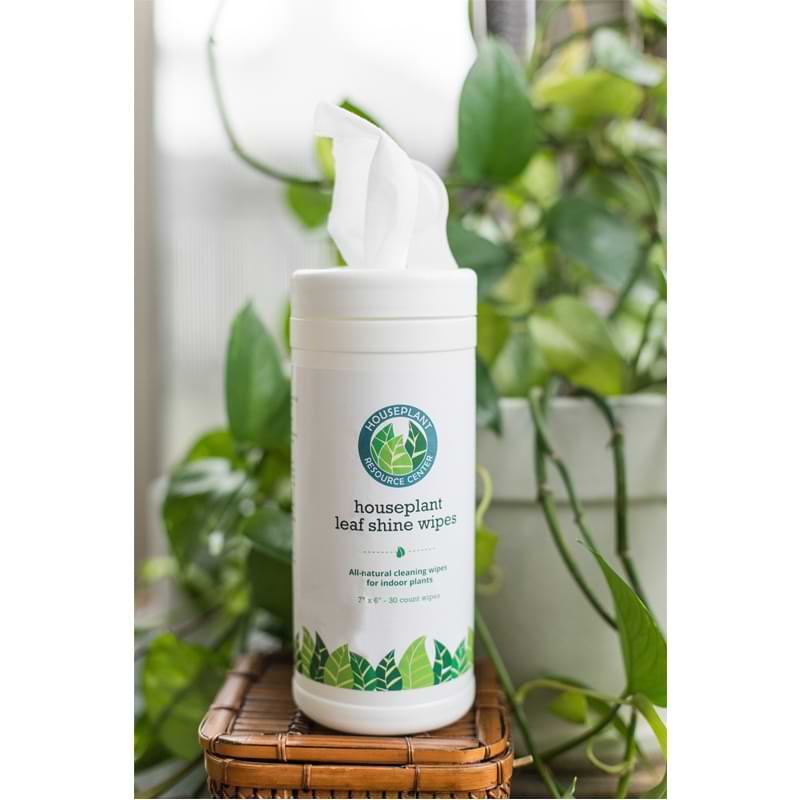

Unlike thrips, springtails have no wings and are easily identified by:
If you’ve got standing water anywhere near the bottom of your fiddle leaf fig pot or yellowing leaves, chances are springtails have taken up residence.
The high jump height of springtails makes them more challenging to contain than thrips. For this reason, you’ll want to follow the same steps for thrips isolation, but it may be wise to put a bag over the plant before walking it to another area. This way, you can avoid spreading the springtails to other plants or rooms in your home.
Springtails can’t damage healthy leaves but love feeding on dead or yellowing foliage. Remove any affected leaves with sharp pruning shears to prevent them from spreading and causing further damage. Springtails are attracted to moist environments, so make sure to dispose of these leaves in a sealed bag.
Overly damp soil is an invitation for springtails to take up residence. By changing the soil, you’ll remove their preferred habitat and make it less attractive for them to stay in your fiddle leaf fig pot. Use smart gravel with your fiddle leaf fig soil for enhanced drainage, ensuring you won’t get a repeat infestation.
As with thrips, cleaning the leaves of your plant to remove any springtail eggs is essential. Use leaf shine wipes or a damp cloth with mild soap to gently wipe down each leaf and stem. This will remove any potential eggs and keep your fiddle leaf fig looking its best.
An Ultimate Fiddle Leaf Fig Care bundle complete with a moisture meter, plant food, leaf armor, and root supplement isn’t the only preventative step you’ll need to take to ensure your fiddle leaf fig recovers from a springtail infestation.
The key to effectively removing a springtail infestation also relies on taking care of any sitting water or damp areas in and around the home. Springtails are drawn to moist areas, so by addressing and fixing these issues, you can prevent them from coming back.
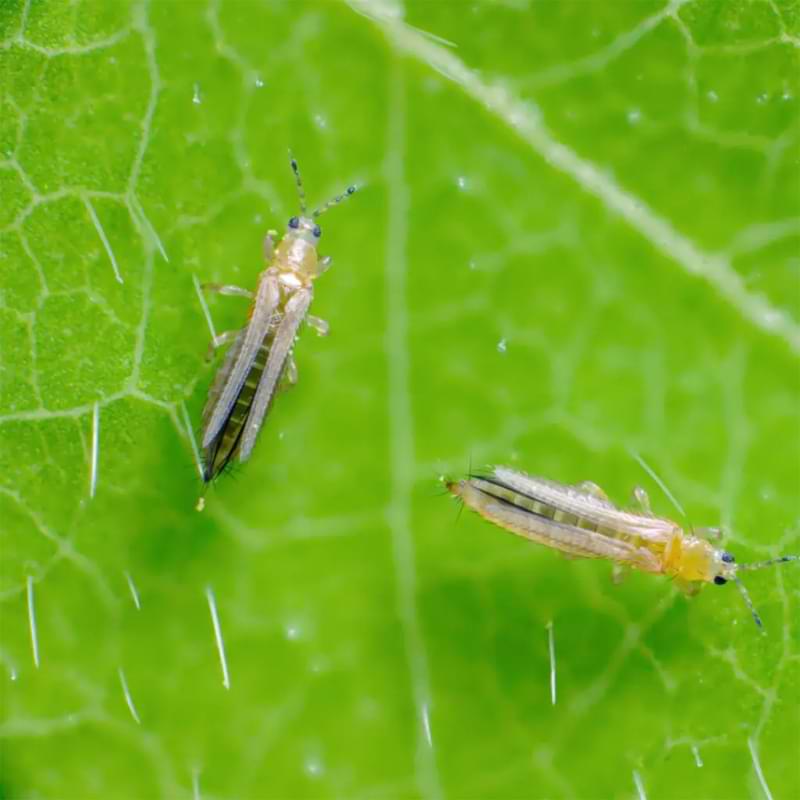

Browned or yellowed leaves will not turn fully green again, but new growth should appear vibrant and healthy once the infestation is under control. It’s important to continue caring for your plant as usual to ensure it can recover fully.be healthy and vibrant if proper care is given.
No, thrips and springtails are not known to cause harm to humans. They may be a nuisance if they infest your home, but they do not pose any known health risks. That said, chemical products used to treat these pests may be harmful if ingested or misused, so always choose natural pest solutions to ensure the safety of other plants, family, and pets.
When thrips and springtails are eliminated, removing the plant from isolation is safe. However, it’s essential to continue monitoring the plant and others around it for any signs of a recurring infestation. Regularly checking the plant’s leaves and soil can help catch any issues before they become a major problem again.
A houseplant multivitamin is a helpful addition to your fiddle leaf fig’s care routine, whether or not it has suffered from a thrip infestation. This will help promote overall plant health and prevent future pest problems by keeping the plant strong and resilient. It can also aid in the recovery process after an infestation.
Preventing thrips and springtails on fiddle leaf fig plants isn’t always possible. But with proper identification and expert care practices, you can effectively control and prevent infestations so your fiddle leaf fig can thrive.
Need more tips for fiddle leaf fig care and maintenance? Join an active online community and subscribe to our newsletter for the latest expert advice, premium products, and exclusive deals.
Not sure what pest is on your houseplant? Learn how to identify thrips and springtails in fiddle leaf figs to ensure an optimal growing environment.
Easily Identify Thrips And Springtails in Fiddle Leaf Fig Plants Read More »
A few thrips and springtails on a fiddle leaf fig plant may not seem like a big deal, but in reality, these silent invaders can quickly become a nightmare for growers. Mastering pest control starts with understanding what to look for so you can take action before it’s too late.
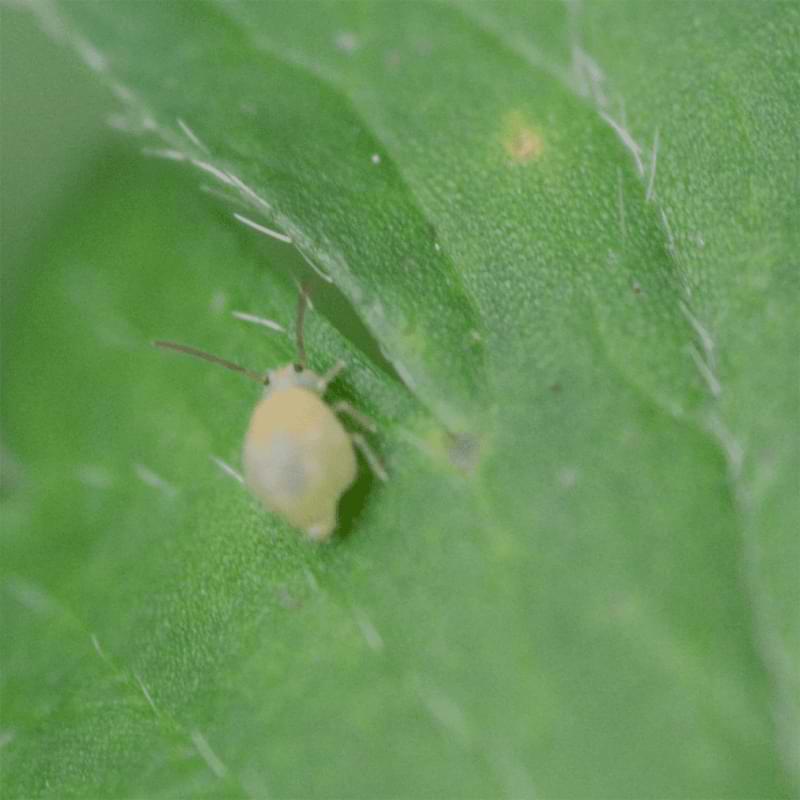

The easiest way to tell the difference between thrips and springtails is by their appearance. Thrips are tiny, slender insects with fringed wings, while springtails are small, wingless creatures that often get mistaken for fleas.
With over 6000 thrip species, these pests may appear yellow, brown, black, or light green depending on the growth stage and type. On the other hand, springtails are typically whitish, blueish, dark brown, black, or gray.
Springtails measure about .24″ in length, making them visible to the naked eye and easier to identify on your fiddle leaf fig. Thrips are significantly smaller, measuring .02″ to .04″. As a result, you’ll need a magnifying glass to see these pests as anything other than dark hair or specks of soil.
Both thrips and springtails have a fast breeding cycle that can create thousands of offspring in a short amount of time. However, some differences in their breeding habits can help you distinguish between them.
Thrips are in their active breeding cycle during warmer months in the spring and summer. When this cycle begins, female thrips emerge from the soil to lay eggs in plant tissues along the leaves and stem. As such, if it’s warm and you see tiny black or white scars on the leaves where the eggs have been laid, chances are there is a thrip problem.
Springtails don’t mind the cold; they can reproduce as long as there is moisture. Females lay eggs in the soil, making them harder to spot – but not impossible. Because these pests lay up to 150 eggs at a time, you’ll notice a snowy build-up of yellowish or white dots in the topsoil or leaf debris.
Thrips feed on plant sap, using their sharp mouthparts to pierce fiddle leaf fig roots, leaves, and stems. Feeding as a group, thrips look like a dusting of pepper on plant leaves, with a heavy concentration on the leaf’s midrib (center vein).
Springtails don’t feed on plants but on decaying plant matter and fungi. These food sources contain the protein and nutrients they need to survive, so you may notice a build-up of springtails in moist soil or on the bottom of your plant pot during feeding times.
Even though they have wings, thrips aren’t great flyers. So, they’ll usually make their way to your fiddle leaf fig by climbing on nearby plants or being carried in by wind currents. You may also see them crawling up from the base of the soil.
Springtails get around a little differently, with a unique appendage called a furcula that allows them to jump several inches into the air. This helps them move quickly from plant to plant and makes them harder to contain.
Because both are most active when disturbed, tapping fiddle leaf fig leaves and soil is the best way to get these pests moving for proper identification. Typically, though not always, thrips will create a cloudy swarm when disturbed, whereas springtails will look more like a scattering of specks.
Thrips are known for causing cell deterioration due to aggressive feeding habits. With diminished ability to absorb nutrients, fiddle leaf figs may experience stunted growth, yellowing or browning of leaves, and wilting.
While springtails don’t harm the plant the same way, their presence is a sign of overwatering and excess moisture, which can disrupt root growth and nutrient uptake.
Pro Tip: Use a fiddle leaf fig multivitamin to supplement nutrient deficiencies in your precious houseplant.
Because springtails feed on moisture, one of the tell-tale signs of an infestation is curled or wilted leaves. You may also notice small holes in leaf tissue where springtails have laid eggs. You may also see the common leaf deformities of overwatering, such as drooping and yellowing leaves.
The extent of leaf damage is much more prominent with thrips. Their aggressive feeding habits leave plants susceptible to harmful bacteria and viruses they carry. Heavy infestations often cause brown patches on leaves where the thrips have fed, eventually leading to leaf drop.
Both thrips and springtails can cause root damage but for different reasons. While both feed directly on the roots, thrips cause physical damage to the roots themselves, making it difficult for the plant to absorb nutrients and water. This results in a fast decline in plant hardiness, wilting, and yellowing of leaves.
Springtails, on the other hand, feed on root fungi that can cause plant rot. This can lead to a weakened root structure and eventually plant death if not caught early enough. Plus, because springtails thrive in moist environments, failure to spot and treat them means you leave your plant vulnerable to root rot.
Pro Tip: Solve root rot related to infestations and overwatering with a natural root supplement designed to work fast.
It takes about 2 weeks for thrips and approximately a month for springtails to infest a plant. The first stages are most apparent in the soil, where tiny white or black specs appear in a build-up in the topsoil.
These specs may or may not move when disturbed, so close inspection with a magnifying glass is key. Visible signs of an early soil infection include:
You may also notice initial signs of nutrient deficiency or overwatering. It is much easier to treat and control if you can catch the infestation at this stage. However, if left unchecked, thrips and springtails will soon emerge from the soil and make their way onto the leaves of your fiddle leaf fig.
Once emerged, the infestation moves up the plant, with pests finding homes in the crevices of leaves and stems. Numbers may seem relatively small at this point, leading many growers to use leaf shine wipes as a quick solution.
But, because thrips and springtails have a fast breeding cycle, what starts as a few pests can quickly turn into a complete dusting of your plant. Once this happens, the infection is most dangerous to your fiddle leaf fig.
The mass infection causes a rapid decline in plant health due to physical damage, unhealthy moisture conditions, and nutrient deficiencies. Within two weeks to a month, your fiddle leaf fig can go from green and vibrant to struggling or dead due to an unchecked thrip or springtail infestation.
Overwatering creates the perfect environment for thrips and springtails to thrive. Using a moisture meter or simply checking the top inch of soil for dryness before watering, you can avoid creating the perfect breeding ground for these pests.
Plants show signs of distress early on, and having a frequent care routine makes you more likely to catch an infestation before it wreaks havoc on a plant. This means regularly checking the soil, inspecting the leaves and stems for pests, and addressing any potential issues promptly.
Premium fiddle leaf fig soil is crucial to prevent the ideal conditions for pests to breed. A high-quality, well-draining soil mix will help avoid overwatering, strengthen plant immunity, and keep pests from easily infiltrating the soil.
Leaf debris and dying leaves are a breeding ground for pests. Regularly pruning your plant will limit these areas and make it harder for thrips and springtails to thrive. Plus, removing infested leaves with sharp pruning shears will help contain the spread of the infestation.
No, thrips and springtails are not harmful to humans. They may be a nuisance if found in large numbers, but they do not pose any direct health risks.
Yes, it is possible to have multiple pest infestations at the same time. In addition to thrips and springtails, you can have mealybugs, spider mites, or aphids infesting a fiddle leaf fig plant.
The key difference will be the presence of wings. Thrips have slender wings, while springtails do not have any wings at all. Additionally, thrips are typically found on leaves, while springtails are more commonly found in the soil.
Knowing the signs and symptoms of common pests like thrips and springtails can help you catch an infestation early on and take the necessary steps to control it. With proper care, including regular inspections, a well-draining soil mix, and appropriate watering practices, you can keep your fiddle leaf fig free from these pesky critters and enjoy a beautiful, healthy plant.
Not sure what pest is affecting your plant? Join our online Fiddle Leaf Fig community and subscribe to our newsletter for the latest in fiddle leaf fig care, products, and growing tips.
Make any occasion special with these hand-picked Fiddle Leaf Fig gifts perfect for beginner and expert growers.
Fiddle Leaf Figs don’t just make the perfect home decor; they also bring joy and life to any living space. Make sure the Fiddle Leaf Fig lover in your life has everything needed to take care of their beloved plant with my top picks for the best fiddle leaf fig gifts!
1. Root Supplement – Best For Fighting Root Rot
2. Fiddle Leaf Fig Plant Food – Best For Total Plant Health
3. Pruning Shears & Scissors – Best For Care & Maintenance
4. Fiddle Leaf Fig Expert + Plant Whisperer – Best Fiddle Leaf Fig Books
5. Houseplant Leaf Shine Wipes – Best For Cleaning
6. UFO Grow Light – Best for Small Indoor Growing Spaces
7. Propagation Station – Best For Cloning Fiddle Leaf Figs
8. All-Natural Seagrass Belly Basket – Best for Mature Fiddle Leaf Fig Plants
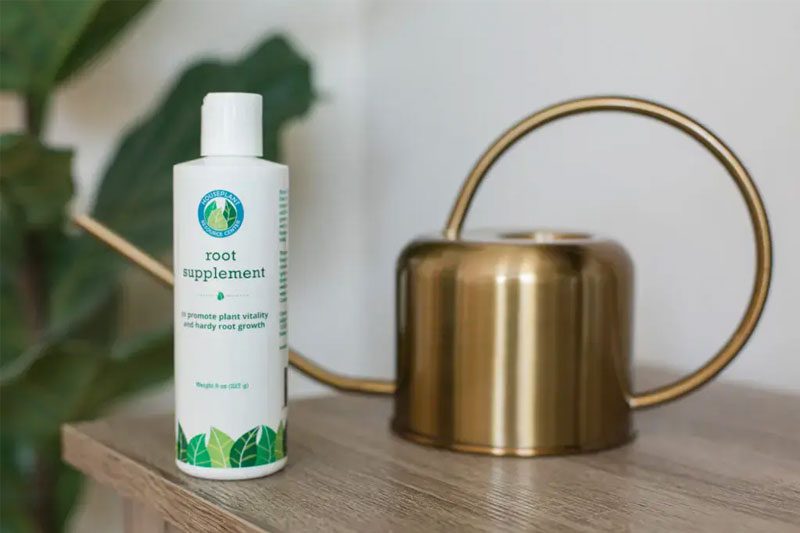

One of my favorite fiddle leaf fig gifts, this non-toxic formula works to protect against pests and diseases for up to two months per treatment, making this versatile root supplement a holiday gift that will keep on giving.
Combining the power of phosphite, phosphorus, and potassium, fiddle leaf fig gifts like this boost
root growth, strengthen overall health, and protect against bacterial infections from Pythium,
Rhizoctonia, Phytophthora, Fusarium, Thielaviopsis, and Cylindrocladium.
Plus, the easy-to-use formula can be added to regular watering routines, and with a shelf life of
two years, it’s one of the few indoor plant gifts that will last long after the holidays are over.
Learn more about Fiddle Leaf Fig Root Supplement.


Fiddle leaf fig gifts for gardeners like this have a balanced NPK ratio, are calcium-fortified, and
entirely urea-free, making them a safe and effective plant food for fiddle leaf fig care. Plus, the
free ebook and webinar will ensure the recipient knows how to use this plant food for maximum
results.
Lab-tested and certified non-toxic, this plant food contains 3% nitrogen, 1% phosphorus, and
2% potassium. The unique balance makes this one of the best holiday plant care gifts to boost
root growth, promote strong stems, and grow vibrant leaves.
Plus, the addition of calcium, phytonutrients, and microorganisms, like humic acid and
mycorrhizae, helps to stimulate soil microbiology, making it one of the best fiddle leaf fig gifts for
gardeners wanting to enhance nutrient uptake for more vibrant growth.
Learn more about Fiddle Leaf Fig Plant Food.


From propagation to maintenance, the Fiddle Leaf Fig lover in your life needs the best fiddle leaf fig
gifts to keep their plant looking its best. These pruning shears and scissors are just that, made
with high-quality materials that ensure all fiddle leaf fig care happens as safely, easily, and
comfortably as possible.
The rust-resistant material of these houseplant accessories means no issues with plant
contamination as you comfortably trim, prune, lop, or harvest with the wide-handled
ambidextrous design. And with a weight of only 4.3 ounces, these pruning shears make the
perfect fiddle leaf fig gifts for plant lovers suffering from arthritis, muscle tissue damage,
and carpal tunnel syndrome.
Learn more about Fiddle Leaf Fig Pruning Shears & Scissors.
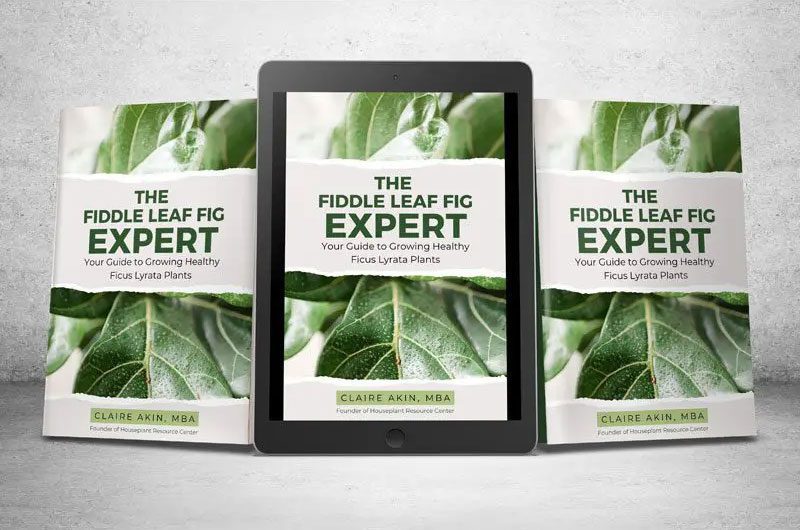

These books are not only great for beginners, but they also offer in-depth knowledge and tips
for experienced growers looking to take their fiddle leaf fig care to the next level.
Both of these books feature comprehensive fiddle leaf fig care practices, from choosing the right
pot to dealing with common pests and diseases. They are easy to follow and available in
different formats, so your loved one can choose the one that works best for their learning style.
Fiddle Leaf Fig Expert covers all the basics a beginner needs to know, while Plant Whisperer dives even deeper into more advanced topics like advanced pruning techniques and fertilization schedules for optimum growth. Plus, both fiddle leaf fig gifts look gorgeous on a coffee table or
bookshelf, making them the perfect gift for any home.
Learn more about Fiddle Leaf Fig Expert + Plant Whisperer.
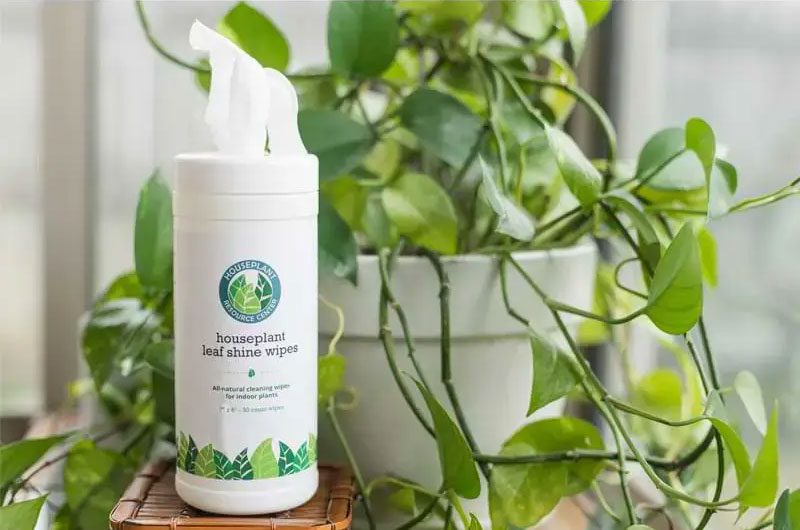

These popular holiday gifts for fiddle leaf fig lovers make it easier than ever for indoor gardeners
to maintain the shiny, dust-free leaves with a simple wiping motion. These hassle-free
fiddle leaf fig gifts for 2023 also protect plant health thanks to the unique ingredients of the 100%
cotton design.
These indoor plant gifts are specially designed to gently remove dust, grime, and grease from
plant leaves while providing a protective layer that helps repel fungus, mold, and mildew. They
are non-toxic and safe for all houseplants, making them excellent fiddle leaf fig gifts for any plant
lover with more than a Fiddle Leaf Fig to protect.
Learn more about Houseplant Leaf Shine Wipes.
Growing in small spaces or ones without much natural light is challenging, but with UFO grow
lights as fiddle leaf fig gifts, your loved one can provide the fiddle leaf fig care it needs to thrive. Its
compact design and advanced features make it perfect for small indoor spaces, winter indoor
plant care, and beginner growers.
The halo shape emits all the wavelengths from 380nm to 800nm, so you can be sure your plant
gets optimal light. Its 4 brightness settings allow for customization depending on your plant’s
specific lighting needs, and its compact size makes it easy to fit in with any current houseplant accessories. And because it goes right into the plant pot, there’s no hassle of hanging or
mounting these fiddle leaf fig gifts
Learn more about UFO Grow Lights.
Christmas gifts for fiddle leaf fig lovers like this one mean better chances of success when
cloning or propagating. Its beautiful design makes it a lovely addition to any decor, whether
displayed on a desktop or mounted on the wall.
The vintage look of this wood and glass propagation station alone make it one of the best
Christmas gifts for fiddle leaf fig lovers. The 5 sections allow for multiple cuttings to be
propagated simultaneously, while the glass vases make it easy to observe and monitor root
growth. Plus, its compact size makes it one of the best fiddle leaf fig gifts for any indoor space.
Learn more about the Propagation Station.
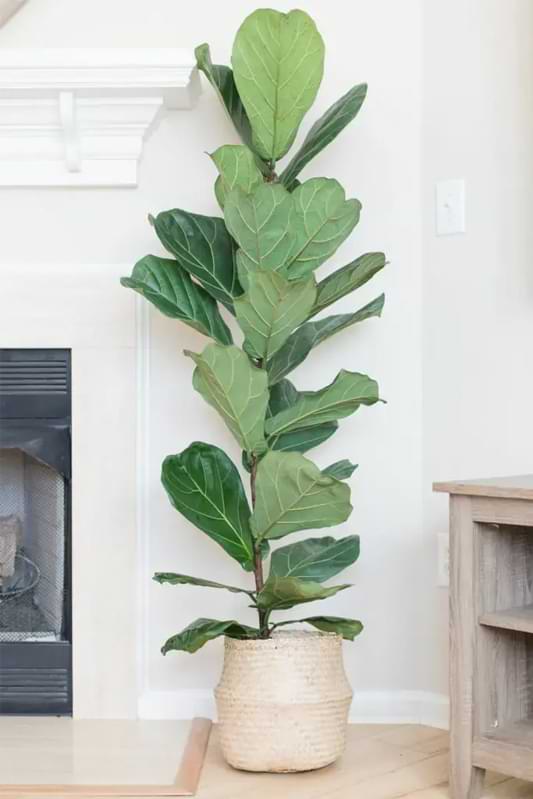

The natural seagrass design of this basket adds a touch of rustic charm to any room, while its
size and sturdy handles make it one of the easiest houseplant accessories to move around for
watering or redecorating.
This eco-friendly basket is handmade using natural seagrass, making each of these houseplant
accessories unique in its design and texture. It can comfortably fit a mature Fiddle Leaf Fig,
providing support and structure for the plant while allowing it to grow freely.
Learn more about the All-Natural Seagrass Belly Basket.
This holiday season, give the gift of a healthy and happy Fiddle Leaf Fig plant with one of these
fantastic fiddle leaf fig gifts for gardeners. These houseplant accessories have enhanced my fiddle
leaf fig care, and I know they’d do the same for the indoor gardener in your life. Happy holidays
and happy growing!
Want special savings on updates on new products from our shop? Sign up for our newsletter and never miss a chance to give the perfect holiday gifts for fiddle leaf fig lovers.
The causes for brown spots on fiddle leaf fig leaves varies, but one thing is
for certain – our guide can help you fix the problem fast.
What Causes Brown Spots on Fiddle Leaf Fig Leaves & How To Treat It Quickly Read More »
Mimicking the native tropical rainforest environment of the fiddle leaf fig plant is vital to keeping it healthy. However, creating the perfect growing conditions isn’t always easy and often causes brown spots on fiddle leaf fig leaves.
Fortunately, these unsightly blemishes have many solutions to their various causes. Check out what’s causing brown spots on your fiddle leaf fig leaves and learn my secrets to keeping your plant happy, healthy, and looking its best.
The exact cause of brown spots on a fiddle leaf fig varies greatly, and the best solutions start by asking yourself the following questions the moment you notice blemishes on the leaves:
The answers to these questions can give you a better understanding of which solution(s) you’ll need to implement. Be aware that it isn’t uncommon to have several factors contributing to brown spots, so don’t be afraid to combine solutions until you find the right balance.
When brown spots form in the middle of fiddle leaf fig leaves and work their way out towards the edges, chances are you have an overwatering issue. This issue is common as growers try to maintain the moisture-rich environments where the fiddle leaf fig naturally grows.
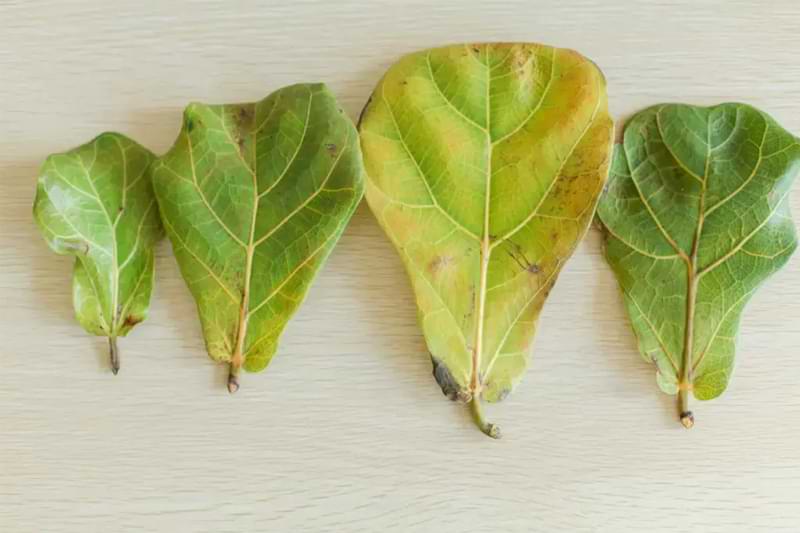

Additionally, signs that verify overwatering issues include yellowing and/or dropping leaves and muddy soil. If these signs aren’t present in combination with brown spots on the middle and edges of your fiddle leaf fig leaves, consider using a fiddle leaf fig moisture meter to check if the soil is oversaturated.
Because many factors contribute to overwatering problems, you’ll need to do a few different things to treat it:
A fiddle leaf fig might take a few weeks to recover from overwatering. Signs of recovery include healthy new leaf growth, a firm waxy leaf texture, and no more brown spots. Be sure to prune affected or dying leaves off the plant to help facilitate faster, healthier growth.
Brown spots that start at the edges of leaves and work their way inward are a common sign of underwatering. This is often a problem for growers in humid environments as they assume the plant is getting more water than it actually is.


Other signs that typically accompany underwatering brown spots include crispy leaves, a droopy appearance, and dry soil.
To mitigate brown spot issues related to underwatering, you’ll need to implement one or more of the following fixes:
Like with overwatering, you’ll also need sharp pruning shears to cut away old leaves that take up the plant’s energy. Signs of recovery include flexible leaf texture, deep green coloring, and no new brown spots.
Like most houseplants, the fiddle leaf fig requires a balance of nutrients to thrive. Often, when the plant isn’t getting enough phosphorus, you’ll notice brown spots around the edges of the leaves. While this can look like an underwatering issue, it’s a tell-tale sign of nutrient deficiency if an overall yellowing of the whole plant accompanies it.
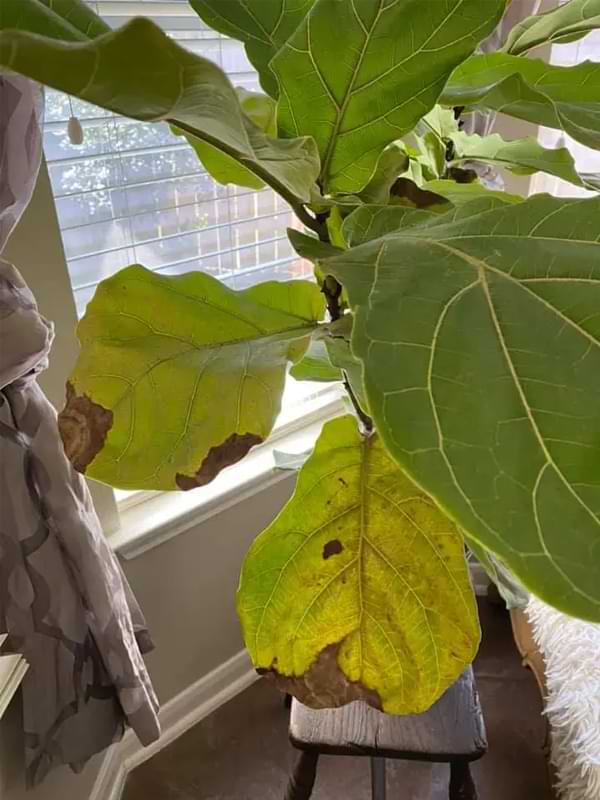

Nutrient deficiencies are among the easiest to fix, remedied quickly by including a liquid Fiddle Leaf Fig plant food into your watering routine. The ideal plant food will have a balance of nitrogen, phosphorus, and potassium with additional macronutrients.
Additionally, include a plant multivitamin every other week into your watering routine. This will help to replenish any other minerals and nutrients that may be missing in the soil or are severely lacking in the plant’s system.
Nothing ruins a fiddle leaf fig’s appearance faster than pests and diseases. Both can easily cause brown spots on leaves, branches, or the plant stem. The most common pest is likely mealy bugs, minuscule insects that feed on leaves and stems. They usually leave a sticky residue that easily attracts other pests and can result in black spots or mold growth.
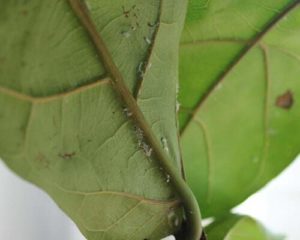



Other pests you may encounter include spider mites, aphids, and scales. Each has its own method of feeding on your plant, but all can leave behind brown spots as a key symptom.
Watering inconsistencies, poor lighting conditions, and low humidity typically cause disease issues. Brown spots that accompany disease issues can quickly spread and cause significant damage to your plant if not addressed promptly.
As with all other solutions, early detection is key for optimal outcomes. If you suspect pests or diseases, take the following measures to ensure rapid recovery and no more brown spots:
Depending on the severity of the pest or disease issue, it may take several weeks for a fiddle leaf fig to fully recover. However, with proper treatment and care, your plant can thrive again without any unsightly brown spots.
As a result of overwatering, fungal infections, or poor soil conditions, root rot quickly causes brown spots on fiddle leaf fig leaves. The telltale signs of this deadly plant health issue will be black mushy roots, yellowing leaves, and brown spots that spread quickly – especially on older leaves. But you’ll have to pull the plant out of the pot and inspect the root systems to know for sure if this is the issue.
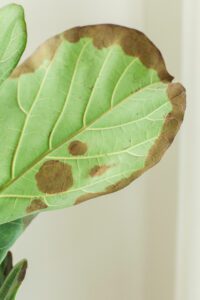

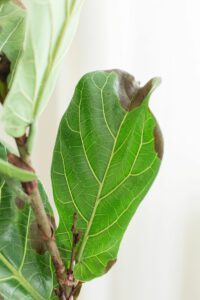

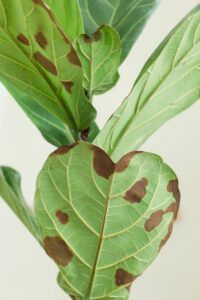

Treating root rot is a delicate process that requires sharp pruning shears, Fiddle Leaf Fig Root Supplement, and a fresh batch of premium soil. To begin:
After a few weeks, you should start to see signs of recovery in the form of healthy green leaves without any brown spots. Continue to monitor your plant closely for any signs of recurring issues and adjust your watering and care routine accordingly.
Pro Tip: Read our Ultimate Fiddle Leaf Fig Watering Guide and learn how to avoid root rot and other moisture-related brown spot issues.
See photos of a plant with fungal root rot and watch as Claire, the Fiddle Leaf Fig plant expert shares her tips and tricks for saving it.
Bacterial infections in plants are common and typically result from unsanitary conditions, poor ventilation, or over-watering. These infections can cause brown spots on the leaves and other symptoms like yellowing and wilting.
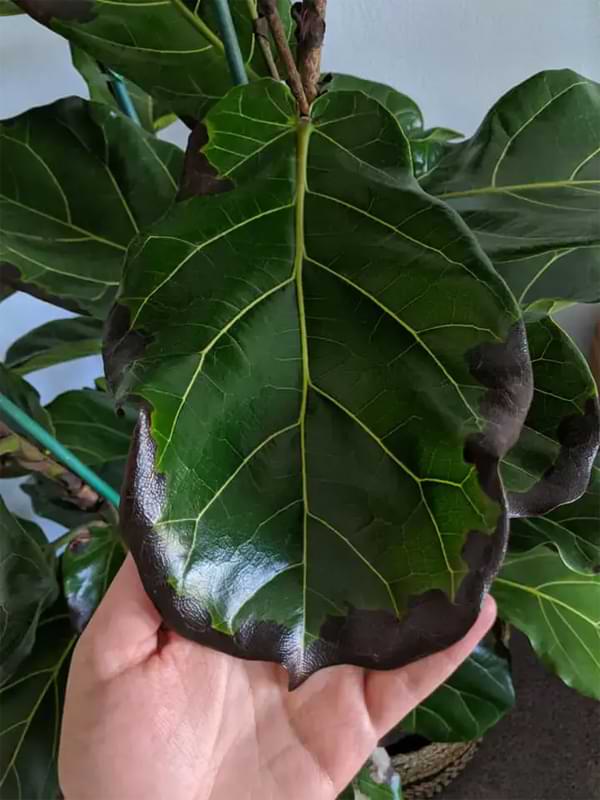

Keep your plant in a clean and well-ventilated environment to prevent bacterial infection. If you notice any signs of infection, immediately isolate the affected plant, treat it with organic bactericide, and incorporate a specialty root supplement, plant probiotic, and multivitamin into your watering routine to promote a strong and healthy immune system.
Light brown spots or groupings of brown spots on leaves can be caused by dry air or heat stress resulting from less-than-optimal humidity levels. Brown spots from dryness are crunchy and will appear first on the oldest, most mature leaves. They also tend to have a more pox-like appearance rather than the large, single spots of root rot or bacterial infection.
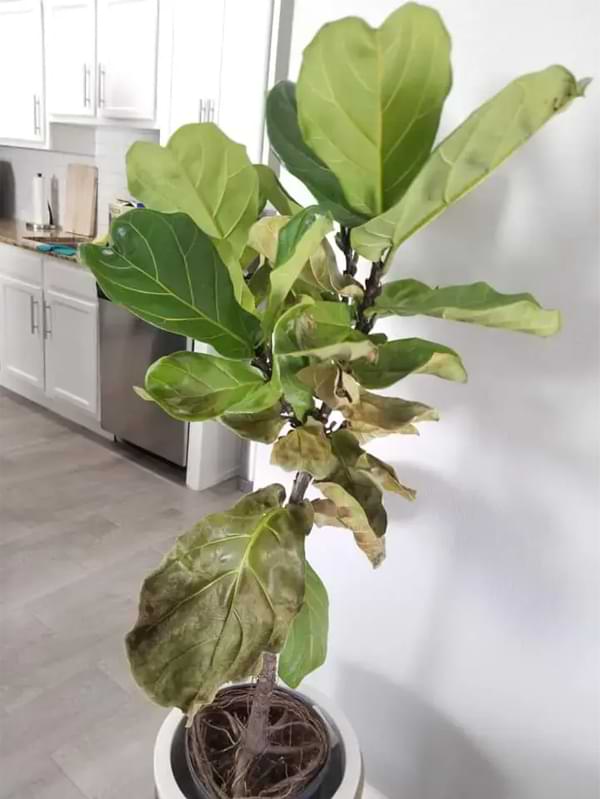

It is important not to confuse underwatering with brown spots from dryness. Unlike with root rot, plants suffering from dryness will show a general wilting or drooping of leaves while roots appear white and healthy.
To prevent your fiddle leaf fig from developing brown spots due to dryness, follow these steps:
Like all other solutions, you must prune away any damaged leaves and provide consistent care for your plant to thrive. With proper attention, your fiddle leaf fig will recover from dryness and prevent future brown spots from occurring.
Pro Tip: Use houseplant leaf shine wipes as part of a daily care routine to help keep your plant’s foliage clean and hydrated for optimal health.
The pot’s size may contribute to brown spots if it is too large for your plant. When a pot is too big, excess moisture can accumulate in the soil and cause root rot or other fungal infections.
Choosing a pot that is only 2-3 inches wider and a few inches taller than the original growing pot is essential. Additionally, the pot size should never exceed six inches in diameter for a mature fiddle leaf fig plant.
The key difference between bacterial infection and root rot is the speed at which the brown spots spread. Bacterial infection will typically progress more rapidly and cause more widespread damage, while root rot may take longer to develop but can still be deadly if left untreated.
If you suspect either issue, carefully inspect your plant’s roots and ask yourself if you have been overwatering or if the plant has been exposed to any extreme temperatures or moisture levels.
Once a leaf has turned brown, it will not turn green again. When leaves look dying, dead, or infected, the best solution is to prune them away to promote new growth and prevent the spread of any pests or diseases.
Make sure to cut away leaves at a 45-degree angle near the base of the stem and use sharp, sterile pruning shears to prevent any additional damage to the plant.
The ideal NPK ratio for fiddle leaf fig plants is 3:1:2, which means equal parts of nitrogen (N) and potassium (P), and slightly less phosphorus (K). This balanced ratio promotes healthy growth and prevents root rot or nutrient deficiencies.


Using a fertilizer formulated explicitly for fiddle leaf figs is important, as this will provide the optimal balance of nutrients for your plant’s needs.
Many things cause brown spots, so assessing your plant’s overall health and considering factors such as environmental conditions, watering schedule, and fertilizer use is important. While poor care can contribute to brown spots, other factors like spent leaves, natural plant aging, and active growing cycles may also be at play.
Your best bet to ensure optimal health for your fiddle leaf fig is to closely monitor plant health, maintain consistent watering, and incorporate proper fertilization into your care routine.
Brown spots on fiddle leaf fig leaves aren’t just unsightly; they can also indicate underlying issues that require attention. By incorporating the essential tools and techniques discussed in this guide into your care routine, you can ensure that your fiddle leaf fig stays happy, healthy, and spot-free for years of enjoyment. Happy growing!
Can lacewings be harmful to a fiddle leaf fig? Keep reading to learn what lacewings are and whether or not they pose a threat to your beloved plant.
Have you ever noticed tiny, silvery white bugs flying around your house or garden? These insects are called lacewings and they feed on aphids and other small insects. They’re a beneficial insect that can help keep your garden free of pests.
But what about the fiddle leaf fig tree in your living room? Are lacewings harmful to a fiddle leaf fig? Keep reading to learn what lacewings are and whether or not they pose a threat to your beloved plant.
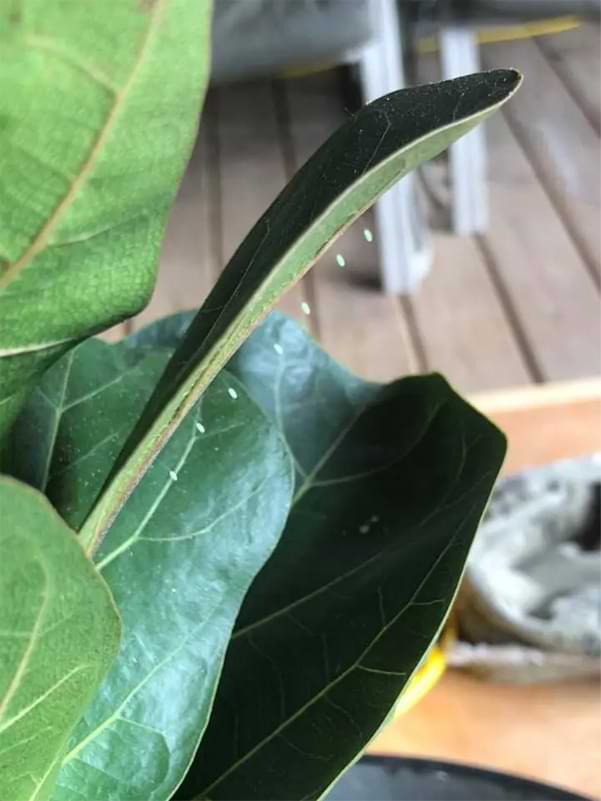

Lacewings are a type of predatory insect that is commonly used in agriculture and gardens to control pests. They are generalists, meaning they will eat a wide variety of insects including aphids, caterpillars, thrips, whiteflies, and mites. Lacewings can be either green or brown and adults have wings with a lacy appearance. Larvae are typically more voracious predators than adults and can consume up to 200 prey items during their development.
Lacewings are considered beneficial insects because they help to naturally control pest populations. However, they can occasionally become pests themselves if their populations become too large. If you find lacewings on your fiddle leaf fig, it is best to leave them alone as they will eventually die off on their own.
Lacewings are a type of predatory insect that feeds on other smaller insects, including aphids, whiteflies, and mealybugs. While they can be beneficial to gardens and indoor plants by helping to control these pests, they can also become a nuisance in your home. Adult lacewings only feed on pollen and nectar, so they are not likely to be the culprit that is munching on your Fiddle Leaf Fig leaves.
Lacewings are predators that feast on soft-bodied pests, such as aphids, whiteflies, and mealybugs. While lacewings will not harm your fiddle leaf fig, they may inadvertently damage the leaves while hunting for prey. If you notice any frass (insect droppings) or webbing on your plant, it is best to remove the lacewings by hand.
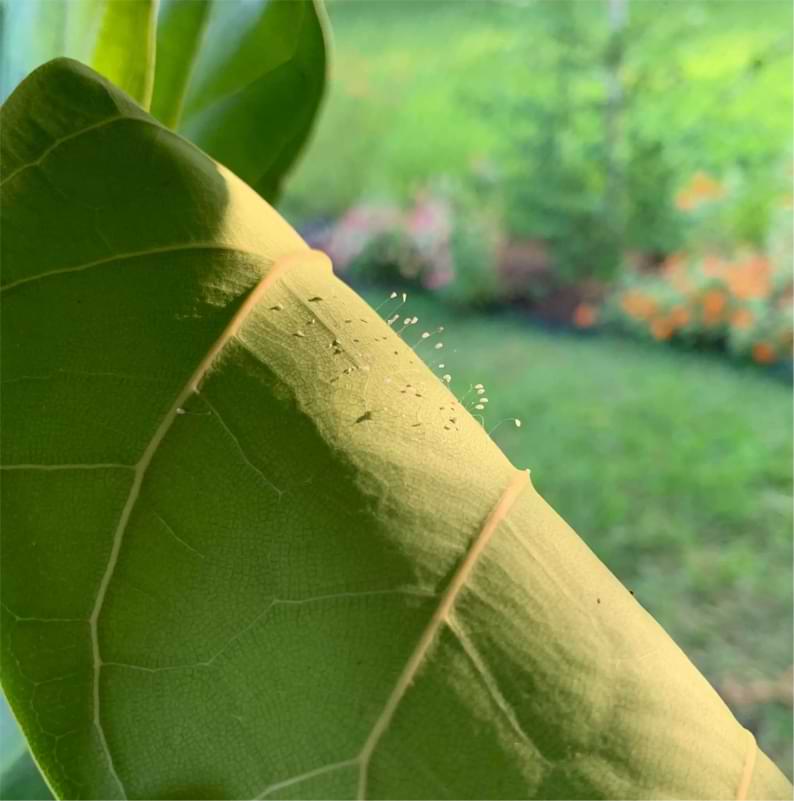

Yes, you should leave lacewings alone if you find them on your Fiddle Leaf Fig. Lacewings are beneficial predators that feed on aphids and other soft-bodied insects. They are harmless to humans, pets and plants. However, if they do become a nuisance in your home, you can remove them, or carefully relocate them to your outdoor garden.
There are a few different ways to get rid of lacewings. You can use traps, pesticides, or natural predators. Traps are the most common method of getting rid of lacewings. Pesticides are also effective, but they can be dangerous to humans and pets if not used properly. Natural predators, such as ladybugs and green Lacewing larvae, can also be used to control lacewing populations.
If you’re using traps or pesticides, be sure to follow the directions carefully. And if you’re using natural predators, make sure to release them into your home at night when the lacewings are active.
Lacewings are likely not the culprit behind the damage on your Fiddle Leaf Fig, but there likely is still damage from the insects that the lacewings were hunting on your plant.
First, remove any affected leaves and dispose of them. Then, wash the remaining leaves with a mild soap and water solution to get rid of any eggs or larvae. Next, apply a horticultural oil or insecticidal soap to the plant to kill any remaining insects. Finally, give your plant some extra TLC by fertilizing it and keeping it well watered. Make sure to continue monitoring your plant and checking the leaves weekly for any signs of insects. With a little time and patience, your Fiddle Leaf Fig will be back to its healthy and gorgeous and green self in no time!
If you see lacewings on your plant, it’s likely because you have another insect present that may not be so nice to your plants. Here are some tips on how to prevent a lacewing infestation:
1. Keep your yard and garden clean. Lacewings are attracted to areas with high populations of other insects, so maintaining a tidy outdoor or indoor plant space will help to discourage them from setting up shop in your yard.
2. Inspect your plants regularly for signs of pests. If you see any evidence of an insect infestation, take action immediately to address the problem. Lacewings will likely move in if there is already an established population of pests for them to feed on.
3. Use traps or baits to catch all insects on your plant. These products can help to reduce the number of lacewings in your area and make it less likely that they will invade your home.
4. Seal up any cracks or gaps around your home’s exterior. This will help to keep lacewings (and other pests) out of your house and prevent them from establishing a nest inside.
Lacewings are beneficial predatory insects that are part of the natural balance in your garden environment. They can help keep other harmful pests in check, and don’t usually do much damage to plants. To minimize potential damage to your Fiddle Leaf Fig, use a combination of methods such as physical removal and biological controls like using natural predators to maintain the lacewing population at an acceptable level. With a little bit of knowledge and effort, you should be able to keep your Fiddle Leaf Fig growing happily and insect free.
For more fiddle leaf fig resources, come join our online community by clicking below! Don’t forget to pick up your fiddle leaf fig care products and accessories inside our Fiddle Leaf Fig Amazon Shop!
Fiddle Leaf Fig Resource Facebook Group
How do stores Fiddle Leaf Figs Survive in Low-Light? Learn the secrets behind these plants that have access to no natural light.
3 Clever Reasons Fiddle Leaf Figs Survive in Low-Light Stores Read More »
Every wondered why fiddle leaf figs survive in low-light stores?
Department stores can be a tough place for a plant. Most stores are filled with fluorescent lighting, and the windows are often blocked by racks of clothes or shelves of merchandise. But there are a few plants that can survive—and even thrive—in these conditions. For those seeking resilient indoor plants, explore how fiddle leaf figs survive in low-light, bringing elegance to spaces with less sunlight.
A fiddle leaf fig can grow without light, but it will not thrive unless provided a substantial amount of artificial light. Most fiddle leaf figs need at least 6-8 hours of indirect sunlight each day to stay healthy, and seeing as it can be difficult to meet those requirements in a department store, most stores that keep plants alive have some tricks they use to keep their plants happy.
There are a few things department stores use to keep their Fiddle Leaf Figs alive, even when they have them in the middle of their floor where the tree can’t possibly get any natural light. Fiddle leaf figs survive in low-light environments, showcasing their adaptability to various indoor settings.
Fluorescent lights are typically the only lighting option used by larger department stores, and although they’re not the top choice for anyone’s interior decorating design, they are actually the perfect light for plants that require medium to low light conditions. These are key to having fiddle leaf figs survive in low-light. So having a Fiddle Leaf Fig inside a store that has plenty of fluorescent lights is actually an excellent place for a fiddle!
The secret to success when it comes to using fluorescent lights to grow plants is the specific light waves that this light emits. Fluorescent lights emit blue light waves, which is perfect for plants with a lot of foliage and not so much flowering.
Many stores choose to rent their plants from a company, and they usually find great success in keeping fresh greenery in the store without worrying too much about keeping one plant alive. These plant care companies generally bring one plant or tree to the store, come back to care for it (watering and fertilizing), and then take the plant back to their nursery after a couple of months and let it recover from the low-light condition if it’s needed.
The company will usually provide the department store with a second plant after removing the first one and care for it in the same way until it’s time to switch the plant out again. This rotation can go on for as long as the store wants live plants.
Overall, the Fiddle Leaf Fig is one of the hardiest indoor trees you can have. Having a resilient plant is the easiest way to keep greenery in the store, so when a store wants live plants, the Fiddle Leaf Fig is often one of the most popular choices.
Fiddle leaf figs survive in low-light conditions, showcasing their remarkable adaptability to various indoor environments.
These plants are native to tropical areas of western Africa. In their natural habitat, they grow beneath the canopy of taller trees, which means they can thrive with only filtered sunlight. So when caring for a Fiddle Leaf Fig, attempting to mimic the plant’s natural environment will give your plant the best chance at survival. In the world of indoor plants, fiddle leaf figs survive in low-light, offering plant enthusiasts a versatile and resilient green companion.
If you live in a home or apartment with limited natural light, placing your fiddle-leaf fig near a north-facing window is ideal. You can always place it in a room with fluorescent lighting like department stores do, although natural filtered sunlight would be best for it.
Ideally, you should place your FLF in a spot that receives at least 4 hours of indirect sunlight every day, or up to 12 hours of artificial light. Just be careful not to install any artificial light too close to your tree.
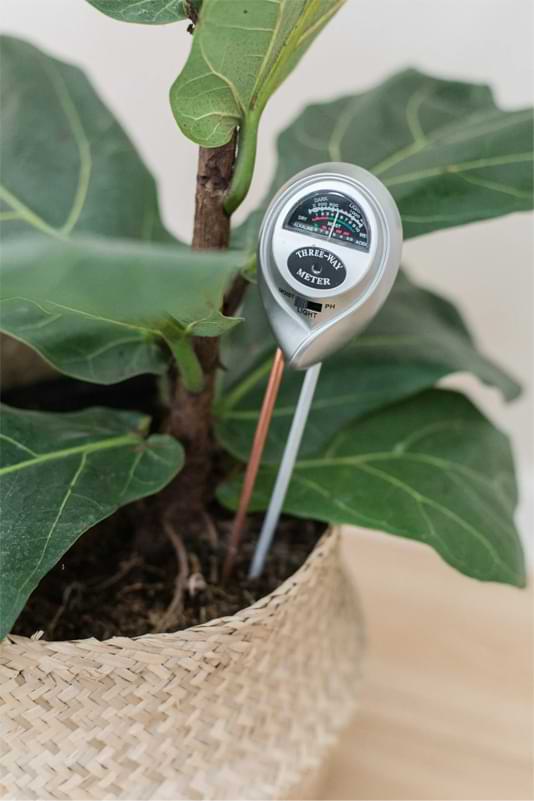

When watering your tree, err on the side of underwatering rather than overwatering. These plants are drought-tolerant and don’t like soggy soil, so allow the top inch of soil to dry out before watering again. Tropical areas typically get consistent moisture, but not always a lot of it at once, so keeping your tree’s soil semi-moist will keep it happy. Using a moisture meter can easily take all the guesswork out of when to water your FLF.
Fertilize your fiddle-leaf fig every other month with a balanced liquid fertilizer designed for indoor plants. You can also choose to use our Fiddle Leaf Fig Plant Food that is designed to be given every time you water your tree.
Department stores are not typically known for being hospitable environments for plants, but the fiddle leaf fig is an exception. This hardy plant can thrive in a department store with little to no natural light.
So next time you’re in your local department store, keep an eye out for a Fiddle tree and take a closer look to see if it’s real.
Here are some of our most popular resources on fiddle leaf fig care to help you grow the happiest, healthiest, and most beautiful fiddle possible!
The Fiddle Leaf Fig Expert eBook
Sunburn on your plant can happen quickly in a matter of minutes! Learn how to rehab a sunburned fiddle leaf fig tree. Every houseplant lover began as a novice on their plant-loving journey, and we’ve nearly all encountered the fast and devastating harm that an extra sunny window can do to our plants. We’re happy
Sunburn on your plant can happen quickly in a matter of minutes! Learn how to rehab a sunburned fiddle leaf fig tree.
Every houseplant lover began as a novice on their plant-loving journey, and we’ve nearly all encountered the fast and devastating harm that an extra sunny window can do to our plants.
We’re happy to collaborate with Jared and his photographer Matt of Jared’s Detours as Jared rehabs a stunning Fiddle Leaf Fig tree that declined quickly from getting too much direct sunlight that scorched most of its leaves. Sunburned fiddle leaf fig can occur quickly!
This beautiful FLF tree went from this:
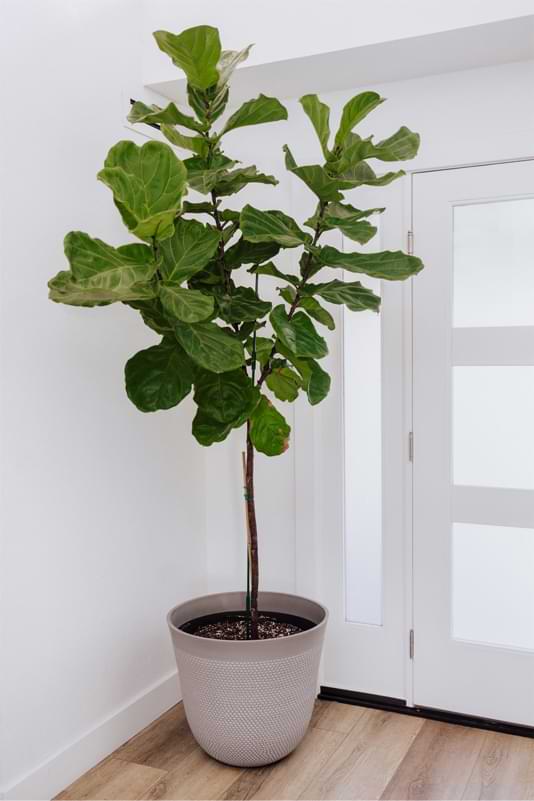

To this in just a couple of weeks. This is how a sunburned fiddle leaf fig can look.
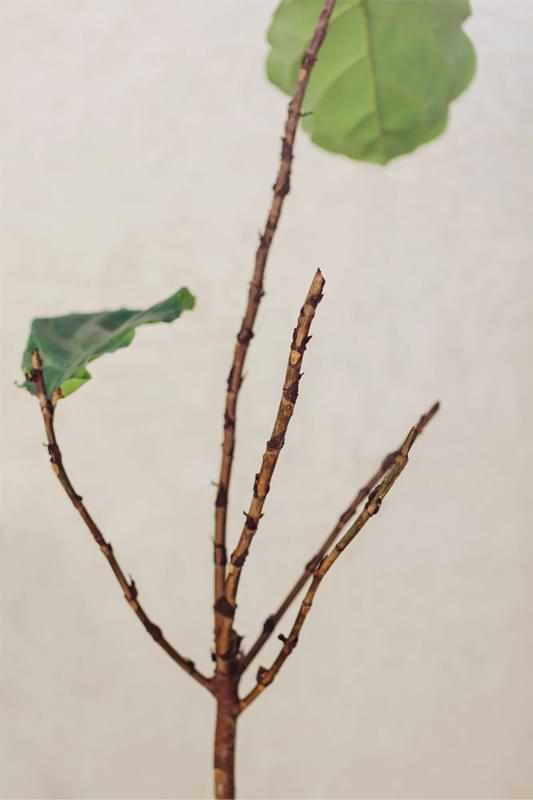

Here’s Jared’s first-hand account of what happened, and how he’s working diligently to beat the odds against him in saving this tree:
It happened so quickly…
The dry desert heat in the Phoenix area creates all kinds of challenges for gardeners. As I write this, the humidity is 16%, and it hasn’t rained in a month.
Still, we’re lucky to have a number of great garden centers and nurseries, since it’s warm enough year-round to be growing something outdoors (or making the attempt)!
One of the nurseries often gets truckloads of fiddle leaf fig trees. One year in a “Black Friday” sale, six-foot-tall fiddles were going for $20 each! What better gift is there!?
Over the summer, I thought I hit the jackpot, when the nursery announced: they were overstocked with fiddles!
They had a whole greenhouse full of eight-foot tall monster fiddles, with big bushy branches.
I already have five fiddle leaf fig trees, plus five more small ones I’ve grown from twigs and cuttings, so my space has reached its limit. (At least, that’s what I’ve been told.)
As luck would have it: my mother-in-law was about to celebrate a birthday! She loves plants, and has a greener thumb than I do, so I figured a beautiful tree would be the perfect gift.
We hauled the tree to her house, and she loved it!
She found the perfect pot and “the perfect spot” for the tree. It was the ideal leafy filler for a vacant corner in a big living room with a tall ceiling.
Then, she grew suspiciously quiet.
Unbeknownst to me, the leaves had begun to drop.
It started slowly, but escalated quickly. In less than two weeks, other family members had declared the entire tree a lost cause.
The entire family kept the carnage a secret from me, until the tree was essentially bare.
By the time I was allowed to inspect the damage myself, the tree had turned into the fiddle version of Charlie Brown’s Christmas Tree.
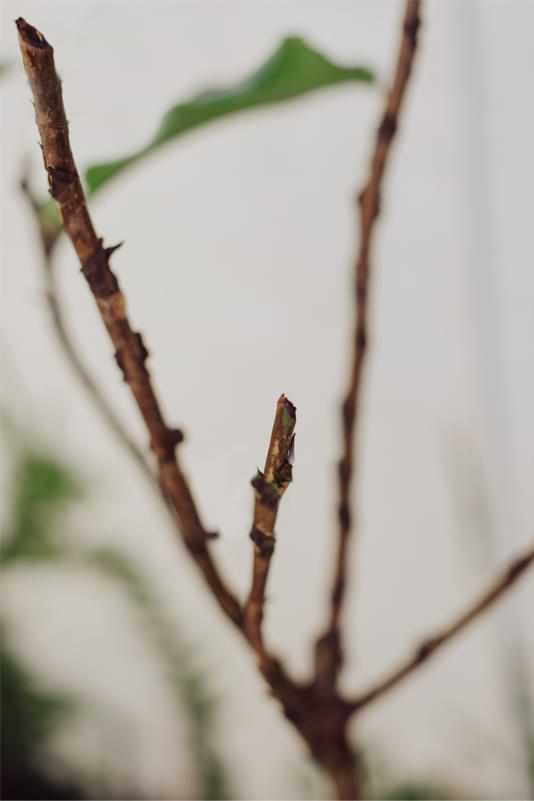

It had a leaf or two left on each limb, and the survivors were barely clinging to life.
The Arizona summer sun, though filtered through a window, was too much for this fiddle. Like most of the trees at the nursery, it was grown in ideal conditions, and quickly went into some sort of shock when the family found “the perfect spot” for its new home. Learning from the experience of a sunburned fiddle leaf fig, I now ensure to provide filtered light to prevent leaf damage.
Plus, I’d imagine the leaves were burned by the sun.
A massacre!
I’m not upset, though; I love a challenge, especially a plant project!
In lieu of them throwing the sunburned fiddle leaf fig out, I asked to take it. I wanted to attempt a rehab, since we had nothing to lose (other than the few remaining leaves).
I’ve followed the advice about sunburned fiddle leaf fig trees posted on the Fiddle Leaf Fig Plant Resource page for years, and put it to work.
I found a spot for the fiddle stalk in our pantry, which has nice filtered light from a skylight.






I trimmed the long, barren limbs down, and was happy to see sap come oozing out. The sunburned fiddle leaf fig is alive!
I used the Propagation Promoter on the edges of the cuttings, hoping to send a signal to the tree to encourage new growth.
The two limbs with surviving leaves went into water, with a dose of Propagation Promoter to see if they’ll sprout new roots and become their own new mini trees. I used a teaspoon of the Propagation Promoter in 2 cups of water. A little seems to go a long way.






While the damage was done in a few short days, I know the rehab process will take many months.
I’m optimistic about the tree’s survival, and excited to see its progress!
I’m hoping to update this post before my mother-in-law’s next birthday… when I *might* re-gift her the same tree… or maybe one its offspring! And this time, if it all works out, I’ll help find another “perfect spot” for a fiddle in her house.
We are so happy that Jared was able to save this tree and begin its long rehabilitation journey. This story of a sunburned fiddle leaf fig is a good learning lesson for all plant loves.
There are a few things to look out for when it comes to your sunburned fiddle leaf fig. The most common sign of a sunburned fiddle leaf fig is the browning and drying of the leaves, followed by leaf drop. This will typically be one of the first signs to look out for, so when you notice it, it’s important to take action quickly.
This post has a bit more information on how to care for your Fiddle Leaf Fig if all it has is some brown spots on the leaves.
Other signs that your Fiddle is getting too much sun include: white spots on the leaves, texture changes on the leaves, and bleached leaves. If you see any of these signs on your FLF, take action sooner rather than later to give your plant the best chance at recovering.
We are so thankful for Jared and Matt for sharing the story and the photos of Jared’s beautiful Fiddle Leaf Fig, and we look forward to seeing how this tree recovers from getting too much Arizona sunlight.
You can follow Jared’s Detours on Instagram here.
These stunning photographs were taken by Matt Ehnes, of www.jaredsdetours.com.
The Ficus Danielle Benjamin is an eye-catching cultivar of Ficus Benjamina, commonly referred to as Ficus Danielle.
Ficus Danielle (Ficus Benjamina Daniella) Care Guide Read More »
The Ficus Danielle Benjamin is an eye-catching cultivar of Ficus Benjamina, commonly referred to as Ficus Danielle. The glossy and oval leaves of Ficus Danielle sit upright as compared to the parent species. It’s a beautiful plant with rich deep green leathery leaves that make it the perfect choice for any corner of the house. This plant, also known as the Danielle Weeping Fig, is a tropical evergreen tree named Weeping Danielle because it drops leaves if exposed to stress.
The Ficus Danielle belongs to the family Moraceae and is native to Southern Asia and Australia.
Medium-sized Ficus Danielle trees have glossy dark green leaves and purple bark. It can be grown as a houseplant, in an atrium, or outdoors in a shaded spot in the garden. Ficus Danielle requires moisture retaining, good drainage, slightly acidic soil and using a potting mix specifically constituted for Ficus plants is essential.
This article will explain everything related to Ficus Danielle’s growth care and tips. So, continue reading to know more about this beautiful houseplant.
| Common Name | Danielle Weeping Fig, Ficus Lollipop tree |
| Botanical Name | Ficus Benjamina Danielle |
| Family | Moraceae |
| Origin | South Asia and Australia |
| Soil | Well-draining, fertile soil |
| Humidity | High Humidity |
| Temperature | 70 to 80 degrees Fahrenheit |
| Sunlight | Bright, Indirect |
| Pests | Spider mites, Scales, and Mealybugs |
| Diseases | Leaf Drop, Leaf Spot Fungus, Anthracnose |
When grown in a pot, this beautiful variety of Ficus can reach up to 10 feet tall. The evergreen glossy dark green leaves are 1.5 inches long and around 1 inch wide, displaying unique splendor and guise.
Ficus Danielle needs to be watered more often, depending on the soil type, container size, season, and indoor climate. The plant prefers the soil to be partially dry between watering; therefore, checking the soil moisture by feel or a moisture meter is a must. It only needs water once the top one inch of soil appears dry.
This plant needs regular and consistent watering in the growing season but be cautious not to overwater it, as it can result in root rot and other fungal infections. Likewise, the weeping fig doesn’t like to be thirsty, or it can cause stunted growth and leave browning. Therefore, make a consistent watering schedule for your Ficus Danielle based on soil moisture monitoring.
The Ficus Danielle prefers bright and indirect sunlight, and the best place for your plant is near a window where it gets indirect sunlight from early morning until late afternoon or at least 5 hours of indirect sunlight each day. This plant can tolerate low light conditions, but brighter light conditions accelerate its growth and result in more leaves.
Over-exposure to direct sunlight can result in the loss of leaves and brown spots. On the other hand, under-exposure can result in pale or yellowish-green leaves and slow growth.
The Danielle Weeping Fig requires high humidity and temperatures as a tropical plant. Its ideal humidity level is approximately 60% for this plant to thrive. If you live in a dry environment, use a humidifier or place pebbles with water on the pots containing this plant. Another option is to mist the leaves regularly to prevent the plant from getting dry, as lack of moisture can cause the browning of leaves. These methods help raise the home’s humidity level and boost foliage charm.
The perfect temperature for this plant ranges from 70 to 80 degrees Fahrenheit. It can tolerate slight variations in temperature but not below 60 degrees Fahrenheit or above 90 degrees Fahrenheit. If the temperature drops below 60°F, move the plant to a warmer location.
In addition, sudden temperature changes can cause damage to your plants because they have difficulty adjusting to extreme temperatures.
The Ficus Danielle requires little maintenance in the way of cleaning and pruning. Keeping the foliage clean using the leaf shine spray maintains the beauty and prevents pests attack.
The leaves are deciduous, drop naturally as part of their growth process, and new leaves grow. Pruning of Ficus Danielle is essential to its care as it promotes new growth. Pruning can be done anytime during the year but works best just before the growing season.
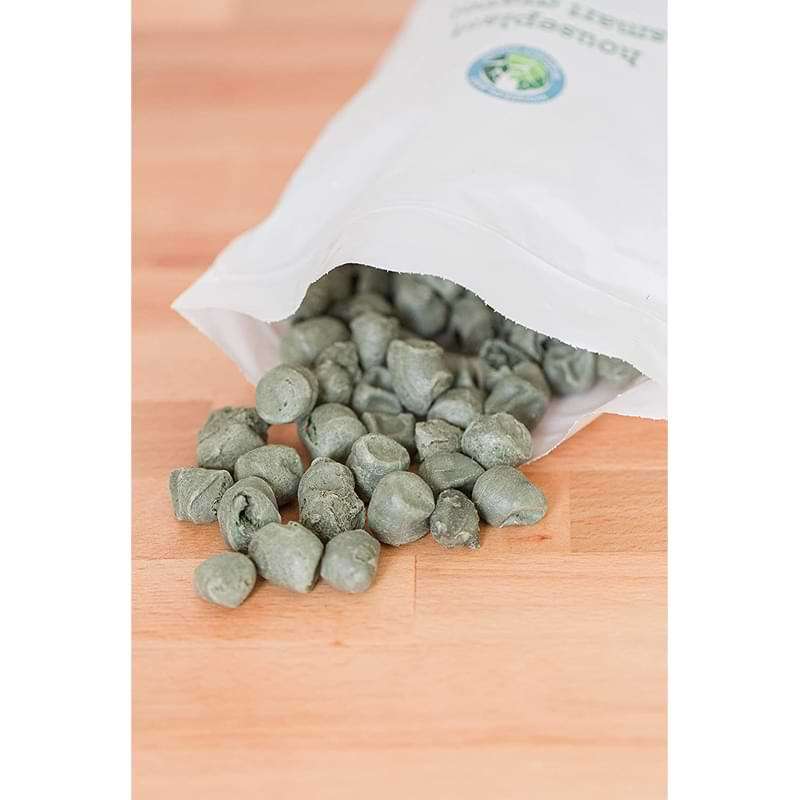

Ficus Danielle requires porous soil with good drainage capacity, so that excess water does not stay for long and causes root rot problems. The optimum pH level for Ficus Danielle is 6-7.
You can formulate your potting mix using a chunky soil mix and adding organic mulch and gravel along with coco coir. You can also use our readymade potting mix developed explicitly for Ficus plants.
The Ficus Danielle needs moderate feeding once every two weeks during the growing season with a balanced fertilizer such as 10-10-10 or 12-12-12 with micronutrients. Use of plant multivitamins and probiotics can further enhance the foliage color and boost plant growth.
However, one should be cautious with the feed quantity, as over-fertilizing can burn the plant’s leaves. In contrast, under-fertilizing will cause stunted growth and poor coloration of the plant’s foliage.
Repotting becomes necessary when your Ficus Danielle outgrows the container, and you may notice the roots emerging from the topsoil or bottom of the pot. The overcrowded roots in the pot may result in quick water drainage, meaning an increased watering frequency. If you notice any such observation, it’s time to repot your Danielle Weeping Fig.
A good time to repot Ficus Danielle is in spring or fall. At this time, the plant will grow actively and will accept the transplantation easily.
The following steps will help you with the repotting of Ficus Danielle.
The Ficus Danielle is a straightforward plant to propagate and is mainly propagated by stem cutting. The optimum time to take cuttings is the early summer, the active growing season for the plant. Stem cuttings can be propagated in both soil and water mediums. Remember to apply the rooting hormone on nodes, as it will promote the rapid growth of roots.
Always take a fresh-grown cutting with two to three leaves and at least one node to have better success at propagation.
The Ficus Danielle plant has toxic sap, which can result in severe skin irritation and breathing problems if ingested by animals or humans. If your pet or kid chews on this plant, seek medical help immediately. It’s always a good idea to keep the children and pets away from this plant.
Ficus plants are susceptible to several pests, including spider mites, scale insects, and mealybugs. These pests are generally treated by spraying insecticidal soap on them or horticultural oil spray. In addition, mealybugs can be treated using a diluted solution of rubbing alcohol. Treating the pests requires daily attention until all the pests are gone from your plant’s leaves.
Ficus plants may also suffer from root rot caused by overwatering and poor drainage. To prevent this issue, check your potting soil or container for signs of waterlogging before planting your Ficus, and ensure adequate drainage. The symptoms of root rot are yellow leaves and mushy black roots. To treat this disease, remove the infected roots, and repot your plant in a new container with fresh potting mix.
The most common problem that the weeping fig depicts is the yellowing of leaves. It can be caused by various reasons, including overwatering and low light levels. If you spot yellow leaves on your plant, try finding the cause and fix it accordingly by moving it to a brighter location with adequate sunlight or setting the watering schedule.
Another common problem that this Ficus tree face is leaf drop which can be caused when the plant is exposed to stress. The primary reasons for the stress are repotting, underwatering, overwatering, and low light. Upon detection of the issue, make the required adjustments for the plant’s healthy growth.
In our care guide eBook, we have further elaborated all care needs and related problems for Fiddle Leaf Fig plants. Alternatively, you can join our webinar to access the quality resource for Ficus plants.
Ficus Danielle is a perfect ornamental houseplant that can be an excellent choice for any space in the house. It’s a low-maintenance plant that isn’t fussy about its desires.
It’s a must-have plant for plant lovers as it can make a great addition to your plant collection. However, if you are planning to bring this beauty home, remember to go through our care guide about Ficus Danielle Benjamin.
Here are some of our most popular resources on fiddle leaf fig care to help you grow the happiest, healthiest, and most beautiful fiddle possible!
The Fiddle Leaf Fig Expert eBook
Ficus Burgundy is an evergreen and popular perennial, adding eye-catching dimensions with its attractive and spectacular looks.
Ficus Burgundy is an evergreen and popular perennial, adding eye-catching dimensions with its attractive and spectacular looks. The plant features striking dark green leaves with deep reddish variegation and a glossy sheen. The Ficus Burgundy is a dramatic and vigorous plant that offers an intriguing large green trunk similar to an elephant’s foot or tusk. It is also known as fiddle leaf fig because of its fiddle-shaped leaves. This wonderful houseplant looks great in any home or office room.
The Ficus Burgundy is a beautiful plant that can give you years of enjoyment. It is an easy to maintain plant and can thrive in warm and high humid conditions. It prefers well-draining, moist soil, and bright indirect light.
This article enlightens every care detail of Ficus Burgundy. Keep reading to learn about the complete care guide for this plant. We have also compiled all our experience in a fiddle leaf fig expert book to spread knowledge among plant parents.
| Common Name | Indian Rubber Tree |
| Botanical Name | Ficus elastica |
| Family | Moraceae |
| Origin | South and Southeast Asia |
| Soil | Well-aerated, Well-draining soil |
| Humidity | 50% or more |
| Temperature | 65-78 degree |
| Sunlight | Partial Indirect Sunlight |
| Pests | Mealybugs, scales, and spider mites. |
| Diseases | Bacterial leaf spot |
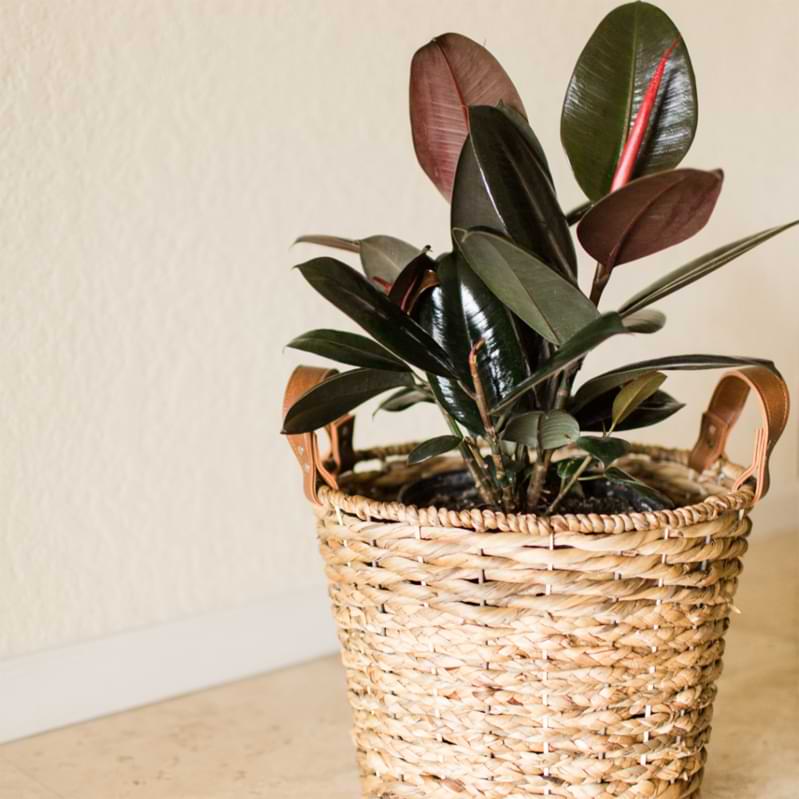

Ficus Burgundy is a fast-growing tropical plant; with proper care, it can reach up to 10 feet indoors. Its beautiful oval-shaped glossy leaves also have a significant size of 4 inches in width.
The Ficus Burgundy requires ample watering during the growing season; however, it prefers the soil to dry out partially between watering cycles. Therefore, one should check the soil every few days to make sure the soil only dries out partially. During hot summer days, you may need to water your Ficus every couple of days, but ensure that you do not overwater, as this may cause root rot or root damage, which could lead to serious problems later.
Similarly, underwatering causes brown spots on leaves, usually accompanied by wilting of leaves and stems. This condition can be corrected by increasing the amount of water given to your plant each time it needs watering.
If you choose to use tap water, let it sit out for 24 hours so it will be free of chlorine and other chemicals that can harm your plant. Alternatively, you can use rain or distilled water for better results.
Ficus Burgundy requires medium light exposure to thrive indoors, and it needs to be placed near windows to avoid direct sunlight, as this could result in scorching of leaves. The plant also performs considerably well when placed under fluorescent lights for about 12 hours daily, receiving enough light for healthy growth.
Over-exposure to light can cause leaf scorch, turning your leaves yellow or brownish in color. Consequently, underexposure can cause slow growth, and the foliage becomes more purplish.
The Ficus Burgundy is a tropical plant that requires high humidity and temperatures. It is sensitive to the cold and cannot survive if exposed to freezing temperatures.
The ideal temperature range of Ficus Burgundy is between 65°F and 80°F, with a relative humidity of 60% to 80%.
If the humidity level is not maintained within this range, the leaves will wilt and droop. If you notice this condition in your plant, you should increase the humidity level by employing a humidifier or placing a small tray filled with water next to it.
Ficus Burgundy is a very easy plant to maintain and grow. It is not that picky about light, temperature, or humidity. However, it needs occasional cleaning and pruning. You can prune and clean it up once every two months. Always use sharp pruning shears or scissors for trimming.
The pruning helps the plant to grow faster and healthier as the damaged leaves and branches are removed. Ensure you remove all dead woody branches so they don’t spread diseases or rot into the rest of the plant. After pruning, clean all tools with a disinfectant before using them again on another plant.
Furthermore, applying our Leaf Armor spray will help keep the foliage radiant and promote plant health by providing essential supplements to the leaves.
Ficus Burgundy requires slightly acidic soil with good drainage. The plant can grow well in soil with a pH of 6.5 to 7.5. The soil should be slightly moist but not soggy.
The plant requires a soil mix rich in organic matter, well-draining, and retaining moisture. To make the task simple for you and to ensure your Ficus Burgundy healthily grows in premium soil, we have a soil mix specially constituted for the Ficus family.


Ficus Burgundy is a happy indoor plant that does not require frequent fertilizing. However, using a balanced fertilizer during the growing season is recommended. Using our years of experience in Fiddle Leaf Fig plant care, we have developed a care bundle comprising Fiddle leaf fertilizer, potting mix, and root supplement. This package will take care of your plant needs from all aspects without you worrying about anything else.
The best time of day to fertilize your lovely plant is early morning or late afternoon when temperatures are cool and humidity is low.
Burgundy Ficus requires repotting every two years to maintain its growth and health. However, you can repot it anytime when you notice the signs of repotting. The common symptoms are roots bulging out of the drainage holes.
When you decide to repot the plant, grab a container one size larger than the current one and fill it with an appropriate potting mix.
1) Water the plant a couple of days before repotting.
2) Gently remove your Ficus from its current container.
3) Remove extra roots circling each other and any dead or dying roots.
4) Fill one-third of the container with fresh potting soil and add houseplant multivitamins to supplement new growth.
4) Spread out your Ficus’ roots evenly over the top of new potting soil, then gently pack down on top of the soil until it is firm and settled firmly into place – this will encourage new root growth.
5) Water thoroughly using room temperature water.
Ficus Burgundy can be successfully propagated through cuttings and grafting. The best time to do this is during summer or late spring when the plant is actively growing.
Take cuttings from the tips of young shoots with one or two leaves. Dip these cuttings in rooting hormone and place them in the potting mix. You can also wrap the cuttings with damp newspaper or cloth to keep them moist until they begin to root.
Certain parts of this plant, such as stems and leaves, are toxic if ingested by humans or pets and may cause nausea, vomiting, diarrhea, and even paralysis. Therefore, ensure that the children and pets don’t have access to this plant.
The common pests that attack this plant are Red Spider Mite, Scale, and Mealybugs. In case of a pest attack, treat them by applying neem oil or insecticidal spray.
The common diseases related to this plant include bacterial leaf spots and Verticillium wilt. Both are caused by fungi and spread through spores. These fungi live on dead leaves and stems, spreading rapidly throughout the plant if it’s not taken care of properly.
The Ficus Burgundy may encounter common issues like brown spots on leaves and wilting or dying branches. Remove all infected parts immediately after noticing these symptoms by cutting them off or pruning them down to healthy tissue using sharp pruning tools.
Is Ficus Burgundy easy to care for?
This plant is easy to care for and can thrive well in a bright and airy room, but it will not tolerate direct sunlight. It also needs frequent watering to keep the soil moist. If growing it in a pot, ensure the container has holes at the bottom to let out excess water, or use a woven seagrass plant basket for Fiddle Leaf Fig plants.
Is Ficus Burgundy an indoor plant?
It is an indoor plant because it does not tolerate cold weather, especially frost. It can survive in low temperatures but will not blossom when exposed to cold weather conditions for long periods.
Where should I place a rubber plant in my house?
You can place your rubber plant in any corner of your home where there is enough light and humidity. However, you should avoid placing it near air conditioners as they have a cooling effect on surrounding areas and may cause damage to your rubber plant’s leaves.
The Ficus Burgundy is a beautiful perennial that makes an attractive houseplant with its thick glossy leaves and reddish variegation. This plant can flourish well if provided with appropriate care and a suitable ambiance. If you are planning to learn more about caring for this nature’s bounty, join our webinar for Fiddle Leaf Fig plants.
This striking beauty can make any space worth living with its presence and is a must have plant for all plant lovers. So, what are you waiting for? Hurry up and lighten your home with this loveliness.
Here are some of our most popular resources on fiddle leaf fig care to help you grow the happiest, healthiest, and most beautiful fiddle possible!
The Fiddle Leaf Fig Expert eBook
Ficus Umbellata is a striking and exclusive collector plant worthy of Ficus. Ficus Umbellata is a striking and exclusive collector plant worthy of anyone’s plant collection. It’s a fascinating houseplant because of its tall, skinny, elegant stem and pronounced emerald green splendidly shiny glossy, heart-shaped leaves. This plant is known by various names, including Umbrella
An Exclusive Grow and Care Guide for Ficus Umbellata Read More »
Ficus Umbellata is a striking and exclusive collector plant worthy of Ficus. Ficus Umbellata is a striking and exclusive collector plant worthy of anyone’s plant collection. It’s a fascinating houseplant because of its tall, skinny, elegant stem and pronounced emerald green splendidly shiny glossy, heart-shaped leaves. This plant is known by various names, including Umbrella Tree Fig. The wonderful Ficus Umbellata is a classic and bold houseplant that makes an eye-catching statement.
The stunning Ficus Umbellata is native to typical rainforests; it needs tropical surroundings to grow and thrive. If you want to keep this plant happy and healthy, offer it a warm temperature away from cold drafts with bright light. The Umbrella tree likes well-draining soil and humid environment, and it appreciates regular feeding in the growing season.
This article will cover every detail of this plant care and discuss some common problems and diseases that the Ficus Umbellata may encounter. Keep reading to learn about the comprehensive care guide. If you intend to learn more about Ficus plant care, join our webinar to get on board with the premier resource for Fiddle leaf fig plants.
| Common Name | Umbrella Tree Fig |
| Botanical Name | Ficus Umbellata |
| Family | Moraceae |
| Origin | Africa |
| Soil | Well-draining |
| Humidity | 50% and above |
| Temperature | 65F-85F |
| Sunlight | Bright indirect sunlight |
| Pests | Spider mites, Aphids, Scales |
| Diseases | Root rot |
The growth rate of the umbrella tree fig depends on several factors, such as sunlight, soil type, and temperature. When the plant is in optimum growing conditions and is happy, it yields a new leaf every week. It’s an upright tree that can grow up to a height and width of 4 feet when grown indoors in a container. The glossy and pleated green leaves can reach a diameter of 2 feet, making it a huge indoor plant.
The Ficus Umbellata needs more frequent watering than other Ficus plants but prefers to dry out a bit in between watering. As a result, the plant needs more water in the growing season almost twice a week, and this frequency reduces in winter as it enters into a state of dormancy.
However, it would help if you were careful with the watering frequency, as overwatering may cause various grave infections, such as root rot. At the same time, underwatering also may have serious repercussions, such as growth deterrence.
If the topsoil isn’t dry, don’t water, and you can check the soil moisture by putting a finger in the soil or using a soil moisture meter. You can also check the plant’s weight to determine its watering needs by lifting the container; if it feels light, it means it wants water.
This plant loves bright indirect light to grow. Direct sun exposure isn’t recommended for this plant, but it does well in the natural morning light. Therefore, place your plant near a window where it can receive bright light throughout the day.
The Ficus Umbellata doesn’t appreciate the direct intense sun as it can burn its leaves; if it’s grown outdoors, bring your plant under shade in summer. Exposure to sunlight may cause leaves to droop, resulting in a dull appearance and slow growth. As the leaves grow in a light direction, always rotate the pot for homogenous growth in all directions.
The Ficus Umbellata hails from tropical regions and prefers humid environments. The ideal humidity level for this plant is 50% and above. In the case of a dry household, consider increasing the humidity by different means, such as placing a humidifier near the plant and misting it regularly or moving it to humid places at home, such as the kitchen or bathroom.
Similarly, the plant loves warm temperatures and is sensitive to drafts and cold air. The ideal temperature range is 65 to 85⁰ Ft as it can’t tolerate too hot and too cold. Extreme temperatures will affect the plant’s growth. Furthermore, it doesn’t appreciate sudden fluctuations in temperature; therefore, keeping away from the hot or cold draft is essential.
Like any other houseplant, the umbrella tree also needs regular maintenance to retain its shape. For the plant’s pruning, use a pair of sharp scissors or pruning shears and gently trim away brown, dry and yellow leaves. Clipping old leaves allows the soil’s nutrients to reach the new leaves encouraging growth. Also, trimming sick and diseased leaves keeps pests and other infections away from the plant. The best time for pruning is late winter or early spring.
Regular cleaning of foliage will not only add to the vigor of the plant but also helps in containing pest development. An occasional spray of leaf shine will do wonders for the appearance of Ficus Umbellata.
Being a tropical plant, Ficus Umbellata prefers moist soil that is also well draining at the same time. Mixing the different soil ingredients to achieve the optimum properties of the end product becomes difficult at times. Therefore, using our extensive knowledge and expertise, we have developed a soil mixture that is readily available and will do wonders for your plant.
However, if you intend to make your soil mix, use a potting mix suitable for succulent or cactus and add a handful of charcoal and pine bark to the mix.
The Ficus Umbellata is a less fertilizer-demanding plant but needs regular feeding in the growing season, almost once a month. For healthy growth, the potting mix should have all the required nutrients for the plant’s growth and all-purpose fertilizer. With our specially formulated blend, you can provide all the needed nutrients to this wonderful houseplant. Occasionally adding the probiotics will further enhance the growth and charm of Ficus Umbellata.
The Ficus Umbellata should be repotted once a year as the roots outgrow the container and nutrients in the soil reduce with time. Therefore, for healthy growth, repot the plant once a year.
The common signs of repotting are roots popping out from the drainage holes or looking excessively large and soil quickly drying out after watering.
To repot the plant, use one big container with fresh potting soil and the best time for this process is the growing season as it reduces the relocation shock and helps to adjust the plant to a new place.
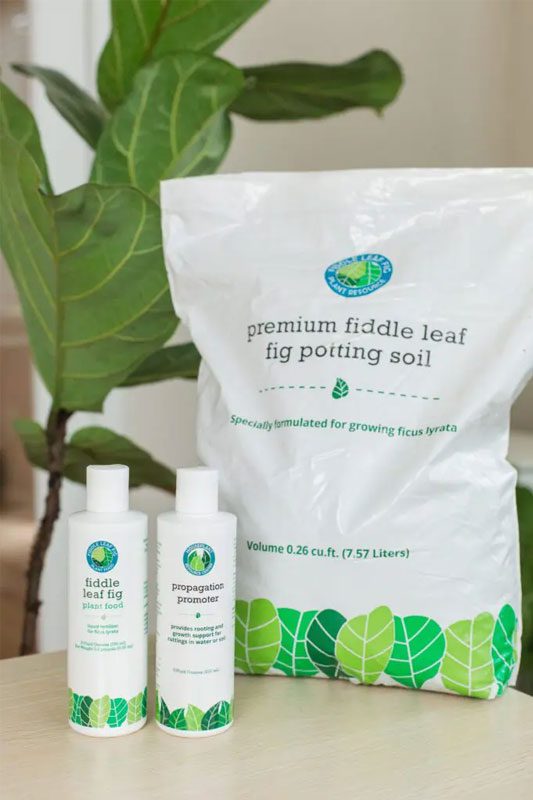

The most simple and effective method for the propagation of Ficus Umbellata is via stem cuttings. Take a cutting with two or three leaves and a node from your existing plant. You can either root the cutting in soil or water.
When propagating the Ficus plant, there is nothing better than having our propagation bundle in hand as it provides you with the rooting hormone for the rapid development of roots, a custom potting mix for fiddle leaf fig, and necessary food for new active growth.
Ficus Umbellata is mildly toxic to humans and pets due to its milky sap, which is harmful; therefore, it should never be consumed. Keep his plant away from children and pets to avoid accidental ingestion and undesired incidents.
Like any other houseplant, the umbrella tree fig is susceptible to various pest attacks, such as spider mites, aphids, and scales. To keep the plant safe from pest infestation is to provide it with the appropriate growth conditions and in case of pest attack, use neem oil or insecticidal spray for the treatment.
The umbrella tree fig is a delicate plant that is prone to many diseases and infections. The most common and lethal disease is root rot. It’s caused by overwatering. When excess water accumulates in the soil, it results in various infections. The major signs of root rot are mushy roots and yellow leaves.
When you suspect root rot in your plant, remove it from the container and inspect its leaves for possible root rot; mushy and black roots can confirm it. Then, remove the infected parts and plant them in a new pot with fresh soil.
The Ficus Umbellata may have a variety of issues, such as
Yellow leaves: This issue can be caused by different reasons, such as low humidity and overwatering. If the plant receives excess water, its leaves start to turn yellow. When you spot this issue, review the watering frequency of your plant.
Drooping leaves: It’s another problem that is triggered by underwatering. Your plant starts to droop leaves when it needs water; therefore, always check the watering regularity and make sure your plant gets the required water.
We have a surprise gift package for you to learn more about any common or rare issue you are facing with Ficus Umbellata. This package will teach you all about growing this gorgeous plant simply but successfully.
Is Ficus Umbellata rare?
Ficus Umbellata is a rare plant known as the umbrella tree fig. this plant belongs to west Africa with wide heart-shaped leaves with a thin stem, which is a differentiating feature of this plant.
How fast does Ficus Umbellata grow?
Umbrellas are fast growers and can produce new leaves every week in the spring and summer seasons.
Can Ficus Umbellata grow outside?
You can grow Umbellata outside, but it needs shade as it can’t tolerate frost in the colder months. Also, take care of the moisture during the cold season to prevent the plant from drying out.
The Ficus Umbellata is a gorgeous houseplant that makes a striking statement in any room. However, it requires moderate care to flourish. If you are a plant fanatic and love to collect plants, then the umbrella tree should be your go-to plant because of its attractive, eye-catching look and friendly nature.
Here are some of our most popular resources on fiddle leaf fig care to help you grow the happiest, healthiest, and most beautiful fiddle possible!
The Fiddle Leaf Fig Expert eBook
Ficus Moclame is an evergreen ornamental plant, suitable for both outdoors and indoors.
Ficus Moclame is an evergreen ornamental plant, suitable for both outdoors and indoors. It’s a relatively rare plant with lovely, glossy emerald green oval leaves. This exclusive Ficus plant possesses air-purifying qualities and absorbs airborne toxins from the surrounding environment.
Ficus Moclame is known by various names such as Pot Belly Fig, Laurel Fig, Laurel Rubber, Curtain Fig and Strangling Fig. This natural beauty can add a unique touch to a living space with its mesmerizing manifestation. Ficus Moclame is an adored houseplant that is native to the tropical areas of Southern Asia and Australia.
The gorgeous Ficus Moclame is a perfect indoor plant because of its non-finicky nature. It’s easy to maintain, thus a great plant for beginners. This plant loves indirect light for its healthy growth and prefers to stay in a warmer climate with high humidity. Its fast development needs slightly moist soil and water only when the topsoil is marginally dry. Ficus Moclame needs feeding twice a month in the growing season.
This article will cover every aspect of this stunning plant’s care and discuss the problems Moclame can encounter. Keep reading below to learn about the care and growth tips.
| Common Name | Laurel Fig, Laurel Rubber, Curtain Fig |
| Botanical Name | Ficus Moclame, Microcarpa |
| Family | Moraceae |
| Origin | Southern Asia, Australia |
| Soil | Well-draining, moist |
| Humidity | 40% and above |
| Temperature | 60F-75F |
| Sunlight | Bright indirect sunlight |
| Pests | Spider mites, mealy bugs, aphids |
| Diseases | Root rot, leaf spot |
The Pot Belly Fig is a moderately fast-growing plant if retained in the appropriate environment. The plant can grow up to 6 to 10 feet indoors; the smooth glossy leaves are 2 to 2.5 inches long.
The beautiful Ficus Moclame prefers even and constantly moist soil, but at the same time, it doesn’t like to sit in water; therefore, one should be vigilant with the watering frequency of this plant. To determine the water need, check the top two inches of soil by plunging your finger in it; if it’s slightly dry, give your plant a drink, whereas checking the weight of the container is another method to define the watering needs. A soil moisture meter is also an accurate means of assessing watering needs. The watering rate also depends on the season; it increases in summer as the soil tends to dry faster, while the plant doesn’t need much water in winter.
Optimum watering frequency is vital for your Curtain Fig plant health because excessive watering can cause root rot, a lethal disease. Similarly, too dry soil can lead to leaf loss.
Being a tropical plant, the Ficus Moclame appreciates bright indirect light. This plant needs approximately 6 hours of light daily, but too much exposure to direct sun can significantly damage its foliage. Therefore, keep it at a place where it receives ample indirect light; the ideal locations are southern or western-facing places.
Avoid placing the plant in darker areas when it obtains less light because, in low light, the Moclame’s growth slows down; on the other hand, too much exposure to direct light can lead to plant burn. Also, regularly rotating the plant will ensure homogeneous growth in all directions as the plant grows in the direction of sunlight.
The Curtain Fig plant shows steady growth in highly humid conditions; the ideal humidity levels are above 50%. If you want the plant to thrive, don’t let the environment be too dry, as it can obstruct its growth. In dry surroundings, regulate the humidity by placing a humidifier near the plant or misting it periodically.
Warm temperature is ideal for Ficus Moclame and does well in the temperature range of 60 to 75⁰ Fahrenheit. As it’s a sensitive plant, it can’t handle too hot a climate which can cause permanent damage, while prolonged exposure to low temperatures can make the plant enter a state of inactivity. Therefore, maintaining a suitable temperature range is essential for the Laurel Fig plant, as sudden environmental fluctuations can be detrimental to its health.
Though the Laurel Fig isn’t a high-maintenance plant, it needs pruning in the active growth season to retain its shape. The best clipping technique is to chop two leaves after the new growth of 6 to 8 leaves. Also, removing old, dead, and damaged leaves with a sharp pruning shear will prevent them from infestation and encourage healthy progress. The ideal time for pruning is the active growing season which is spring and early summer.
The right tools and proper knowledge are the core ingredients of a successful plant care program, and luckily for you, we have gathered all our expertise in one place through our exclusive free bonus pack.
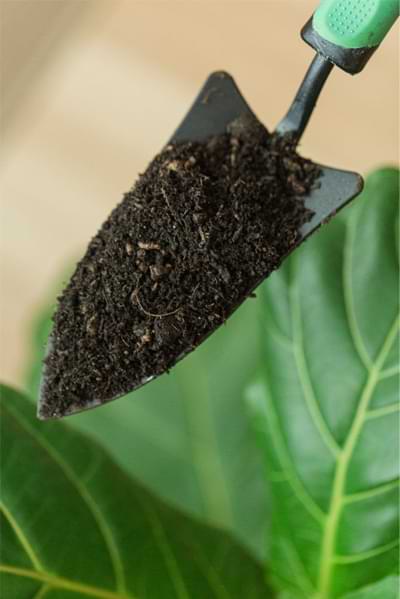

Ficus Moclame performs well while sitting in a well-draining soil with the capability to retain moisture. Adding organic matter with the right balance of moisture-retaining constituents like coco coir and vermiculite helps achieve the best results. To make the plant parents’ life easy and hassle-free, we have developed a soil mix best suited for Ficus Moclame and will do wonders for your plant.
The plant prefers slightly acidic soil with a Ph level of 6.5 to 7.


The Pot Belly Fig acquires nutrients through fertilizer; however, if the potting soil is fresh, your plant doesn’t need fertilizer for at least two months. Conversely, this plant needs fertilizer for its fast growth in the active season twice a month. We have developed a perfect mix of fertilizers for the Ficus plants that will provide the optimum quantity of nutrition for accelerated growth.
The Ficus Moclame doesn’t like to be repotted quite often but once a year is necessary to provide fresh nutrients. You can also repot the plant earlier when it shows the signs of transplanting, such as roots bulging out from drainage holes. The ideal time for transferring is spring and summer.
Propagation by cutting is the simplest method for increasing the number of your Ficus Moclame plants. To propagate the plant, make cuttings with two to four leaves and a node point. Either method of propagation in soil or water is successful for Ficus Moclame. Using a rooting hormone if propagating in the soil will help achieve better results.
Always plan the propagation activity in spring or early summer so the plant will have an active growing season ahead for development and flourishing.
Ficus Moclame is not pet friendly as it’s toxic for pets and humans. It can cause skin irritation, and if consumed, it can cause serious health issues; therefore, always keep it away from children and pets. In case of ingestion, consult the medical practitioner immediately.
Ficus plants are prone to various pests, including spider mites, aphids, and mealy bugs. Among these three, the mealybugs are more notorious pests and can cause serious issues. These oval-shaped, flat-bodied insects can infest 200 plant species, including the Ficus. These tiny insects inject toxins into plant leaves that spawn discoloration and leaf drops.
Upon infestation identification, start the treatment with insecticidal spray. The infestation attack can be prevented by using the leaf armor spray to keep the pests at bay.
The Ficus Moclame is also susceptible to many diseases, and the most common one is root rot. Excess water is the reason for this disease and can affect the plant significantly and even kill it if not treated promptly. The general signs of root rot are yellow leaves and mushy roots. After the appearance of these signs, repot the plant in a new container with fresh soil. To prevent root rot, follow proper watering practices to avoid overwatering.
The common issues belonging to this plant are;
Leaves dropping: This Ficus plant loves highly humid conditions; if the environment is too dry, it starts to drop leaves. When you notice your Ficus plant is losing leaves, increase the humidity level or move it to higher humid places.
Brown leaves: This condition is caused due to underwatering; if your plant receives less water than the required quantity, its leaves flinch to turn brown. Adjust the watering schedule of your plant according to its needs.
If you are having trouble with your Ficus plant, join our webinar to enhance your knowledge and get access to our firsthand pro-tips to troubleshoot any problem you are facing with your fiddle leaf fig.
Ficus Moclame is an excellent indoor houseplant as its oval-shaped emerald glossy leaves can complement any space wherever it’s placed. This plant isn’t demanding and will seamlessly thrive if provided with accurate growing conditions.
The shape and the appearance of this plant make it a center of attraction in your home, and its unique air-purifying properties make it a sought-after houseplant.
If you want a calm and soothing environment at home to boost your mood, don’t wait to bring his exquisiteness home.
Here are some of our most popular resources on fiddle leaf fig care to help you grow the happiest, healthiest, and most beautiful fiddle possible!
The Fiddle Leaf Fig Expert eBook
It takes a bit of experience to determine how to treat and fix fiddle leaf fig brown spots. Follow this ultimate guide to find out how.
How to Treat and Fix Fiddle Leaf Fig Brown Spots: The Ultimate Guide Read More »
Brown spots on fiddle leaf figs have four main causes:
One of the most common concerns that fiddle leaf fig owners face is how to fix fiddle leaf fig brown spots on the beautiful leaves of their plant. It’s disheartening to see brown spots spoiling the beautiful large green leaves of your ficus lyrata, and the condition can be frustrating and confusing because it takes a bit of experience to determine what is causing the brown spots on your fiddle leaf fig.
It’s important to diagnose the problem quickly and treat your plant to help it fully recover. There are actually four main causes of brown spots:
When beginning to look for the cause of the brown spots, here are a few questions to ask yourself:
And here are some questions to get you started with diagnosing the specific cause of the brown spots:
Once you’ve taken a good look at your brown spots and reviewed the characteristics, it’s time to figure out what the cause is.
I’ve found that the best way to tell what’s causing your brown spots is to review several photos of the most common conditions to identify the problem with your plant. Here’s your definitive photo guide to brown spots in fiddle leaf figs!
Arguably the most common cause of brown spots in a fiddle leaf fig is root rot from overwatering.
Root rot is a fungal infection that takes place when the roots sit in water for too long and don’t have adequate drainage. Not enough sunlight can make this problem worse. Too large of a pot can also cause your plant’s roots to remain too wet between waterings.
One interesting feature of root rot is that it tends to affect older leaves first, as your plant attempts to save the newer growth that is closer to valuable sunlight. The lower leaves of your plant are the ones root rot will affect first, so begin your search there.
Fiddle leaf fig roots in particular need fast-draining soil and ample drainage. If your fiddle leaf fig has brown spots from root rot, you’ll want to act quickly. Try our Root Rot Treatment to treat your infection before it spreads, and use our Houseplant Leaf Armor to protect your fiddle leaf fig from bacteria, fungus, and insects.
Here are the telltale signs of root rot:
The brown spots may start as small black spots, then will get larger, until the entire leaf drops. If you think your plant has root rot, you can use a moisture meter like this one to take a moisture reading near the bottom of the roots. If your reading is very wet, root rot is likely the cause.
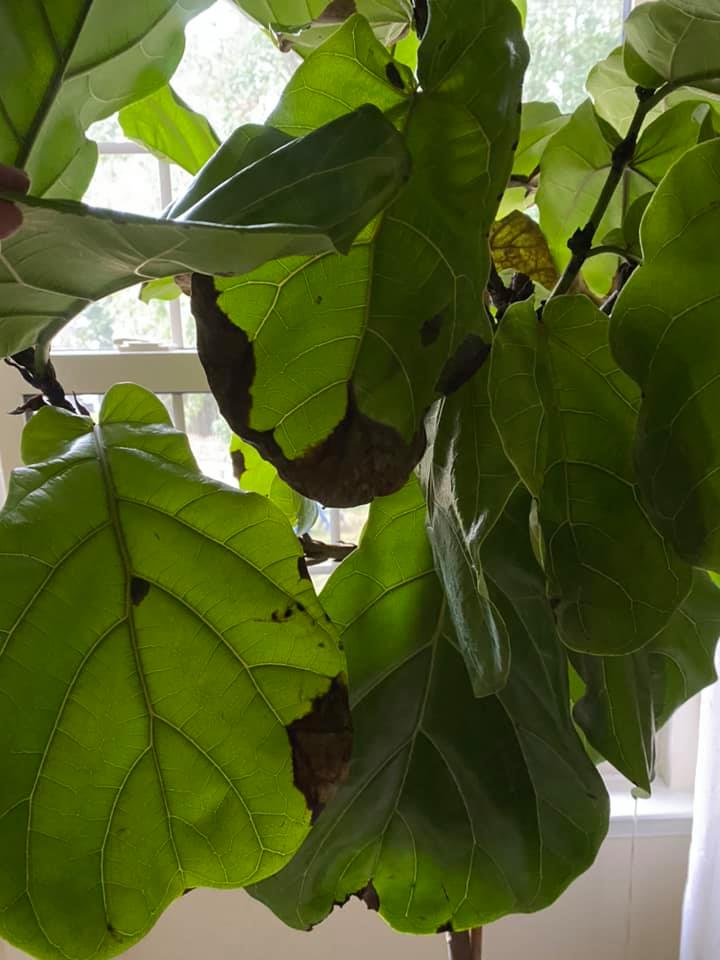

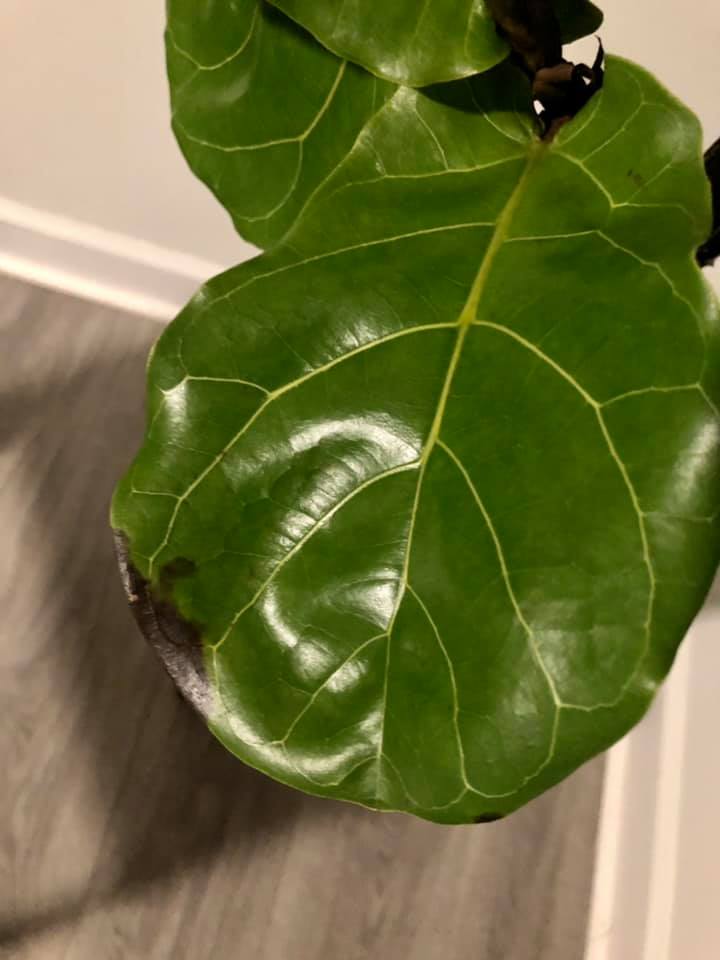



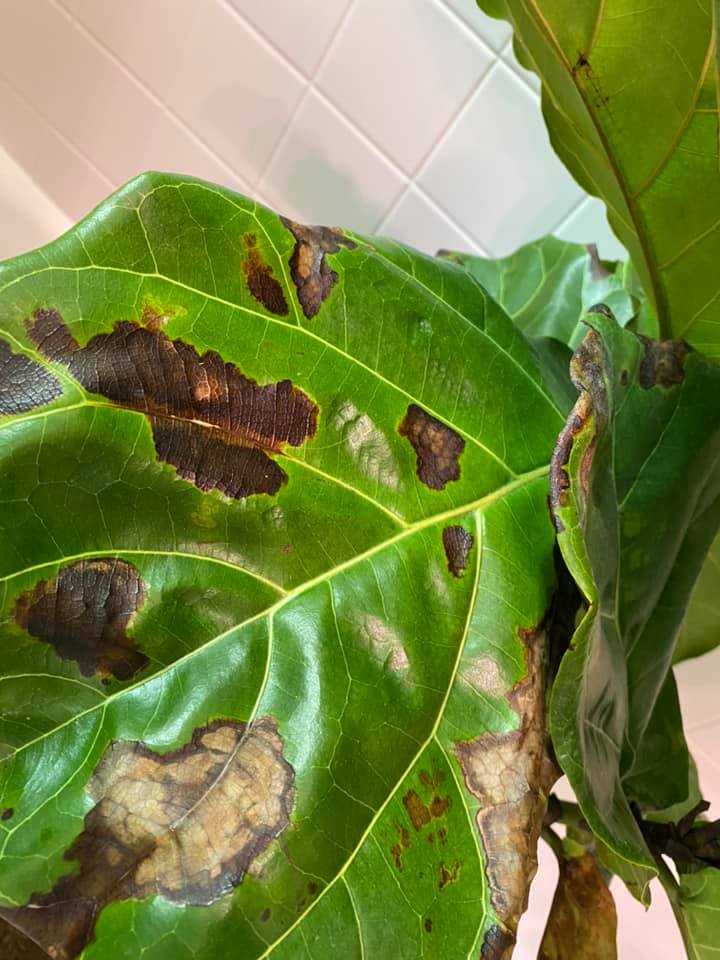

Generally, root rot is very treatable, especially if you catch it early.
Since root rot is generally a problem of poor drainage, you’ll want to address your drainage immediately. Make sure you have a well-draining container, fast-draining potting soil, and that you aren’t watering too frequently.
The next thing you’ll want to do is assess the damage. If there are just a few brown spots on the leaves, you do not need to repot your plant. Let your plant dry out for two weeks or more until the roots have adequate time to recover. Remove the affected leaves and make sure your plant has enough sunlight.
If you’re not sure whether your plant is getting too much water, you can use a moisture meter to make sure the roots are drying out between waterings. Then your plant should recover with proper drainage and watering. Take a look at our Ultimate Watering Guide here to learn more about proper watering.
However, if the damage is severe or spreading rapidly, you’ll want to perform root surgery and repot your fiddle leaf fig.To do this, remove your plant from its pot and hose down the root ball. Cut away any brown, mushy roots. Make sure you have proper drainage and repot with fast-draining house plant soil like this. Follow good watering practices in the future to make sure the problem doesn’t reoccur.
Bacterial infections in fiddle leaf figs can be very frustrating and hard to treat.
The problem mimics the symptoms of brown spots from root rot, but is often more difficult to fix.
Here are the signs of a bacterial infection:
Whether your brown spots are from root rot or a bacterial infection, our Root Rot Treatment will help your plant recover, and our Leaf Armor will protect it from future bacterial infection.
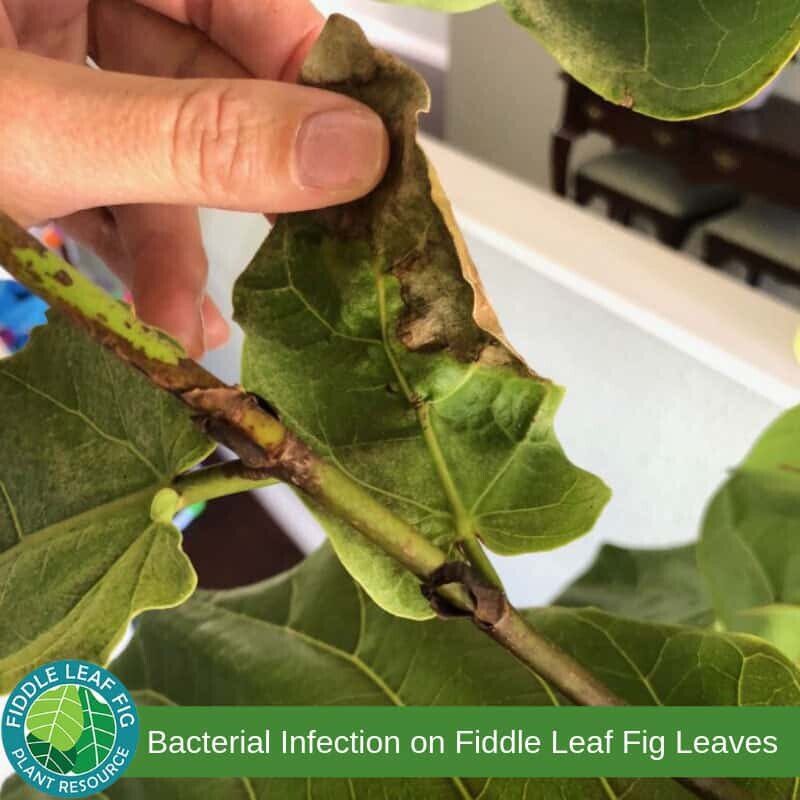

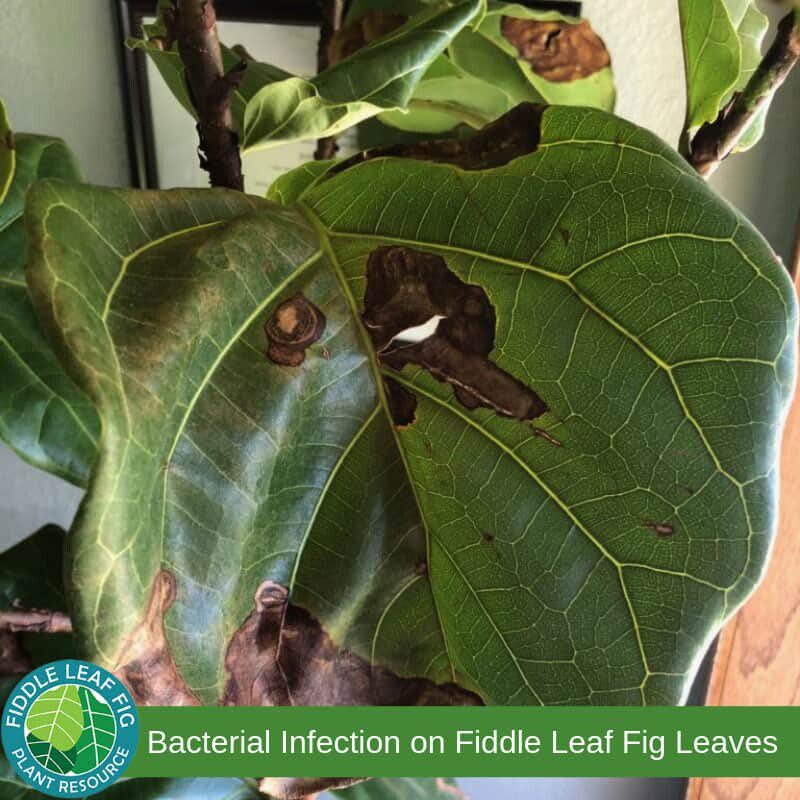

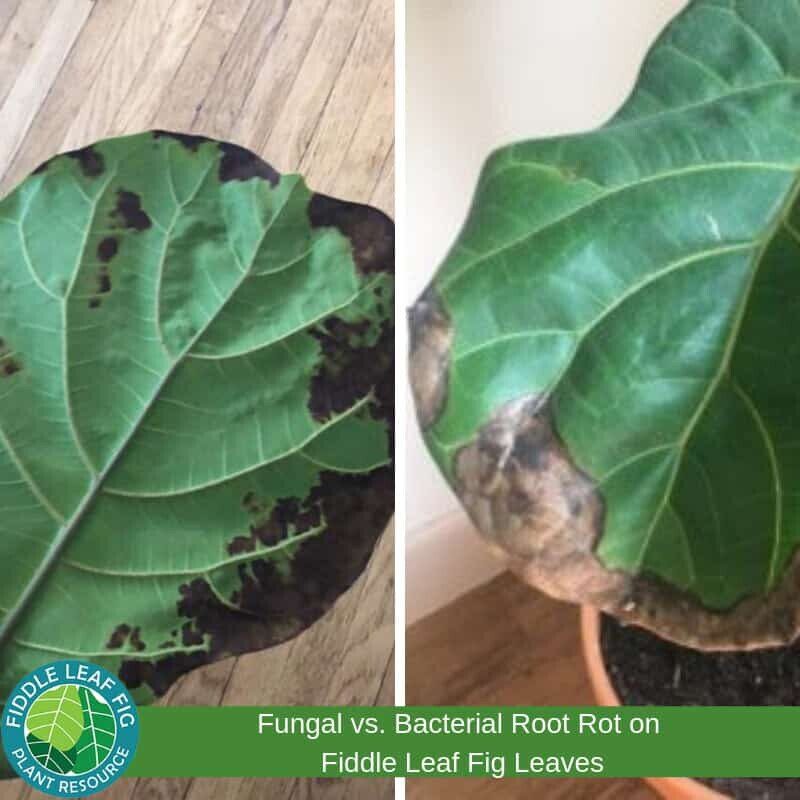

Unfortunately, this is one of the hardest conditions to treat in a fiddle leaf fig.
The key is to treat the spots as early as you can before the damage spreads too far. The treatment is similar to treating root rot: you’ll want to make sure your plant’s roots dry out between waterings and that it’s getting plenty of sun.
If the damage is not severe, cut off all of the leaves with brown spots and repot your plant with fresh, sterile soil in a container with good drainage. Give it plenty of light and go easy on watering until it recovers.
Consider using our Leaf Armor, which was designed to protect your houseplant from not just bacteria, but also from insects and fungus.
Another good way to treat bacterial infections is to put your fiddle leaf fig outside in the shade to recover, depending on your climate. Fresh air, plenty of sunlight, and warm conditions can help your plant recover. Just be sure that your plant is protected from direct sunlight and doesn’t get too cold (less than 50 degrees) or too hot (greater than 95 degrees).
However, if your plant has more than 50% of the leaves affected by brown spots and the condition is spreading, you may be better off starting over. Discard the plant and start fresh with a healthy specimen. You may want to contact the store where you purchased your plant to see if they’ll replace it.
Very dry fiddle leaf fig plants can quickly develop brown spots, which typically are more tan in color than brown, and start at the edge of the leaf and spread inward.
The relative humidity for your plant should be between 30-65%, so if your home humidity is much lower or your plant is near a heater, you may need to create more humidity for your fiddle leaf fig by misting or changing locations.
Brown spots can happen slowly or very rapidly on a hot day, like for the fiddle leaf fig pictured below, which was left outdoors on a 110-degree day. This leaf completely dried out in less than 12 hours.


In this next photo, you can see a completely dry plant that was left without water for over two months when its owner went on vacation. A telltale sign of dryness is the drooping of the leaves, which have lost their turgor pressure from lack of water.
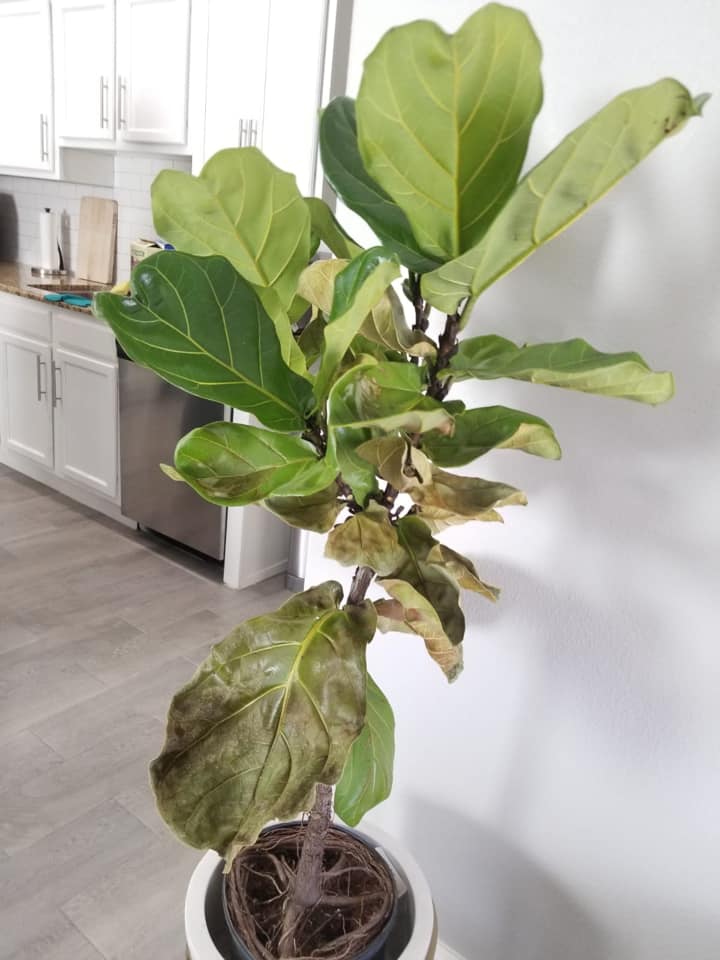

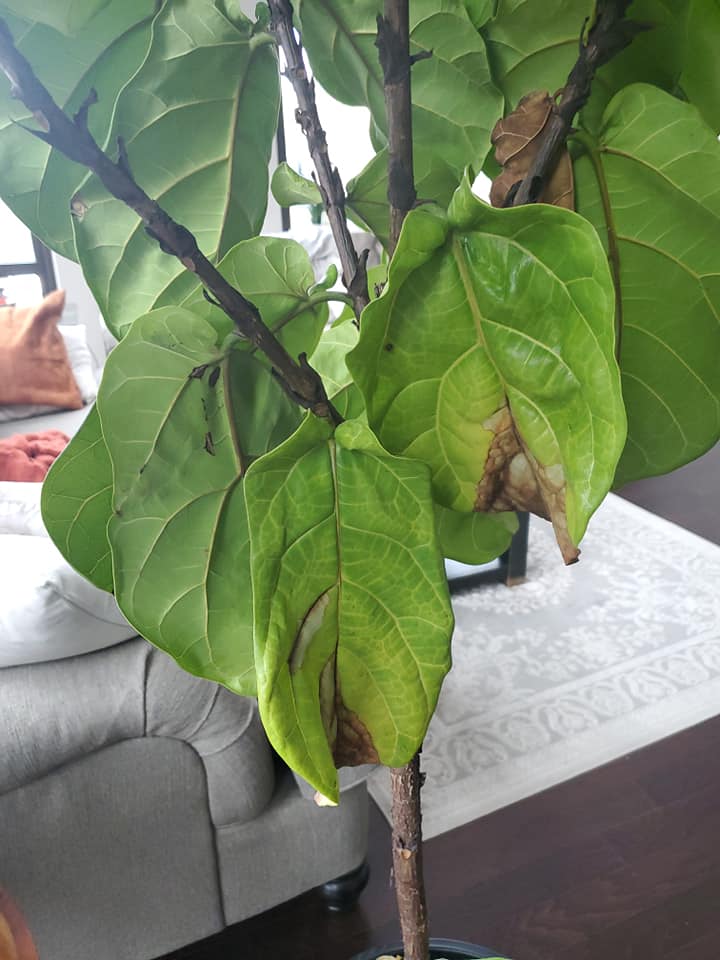

Using a moisture meter like this one lets you know when your plant is thirsty. Consistent adequate water is essential for your fiddle leaf fig to thrive!
Read our Ultimate Watering Guide for more information.
The basic treatment for a dry plant is making sure you’re not underwatering. Your plant needs to be watered when the top inch of soil has dried out, any more and you risk not giving your plant enough water. If you notice soil shrinkage, you’ll want to repot your plant to make sure your root ball is getting adequate water. Repotting is easy, and there are just a few simple steps to follow to do it successfully.
If your fiddle leaf fig is in an environment with low humidity or near a heater, consider moving it to another location. Water regularly (try once a week) and monitor your plant to make sure it’s getting enough moisture.
You can try misting every one to three days or using a humidifier near your plant if your home is very dry, though this is not typically necessary unless a heater is running near your plant. After treating your plant for dryness, get your plant on a good watering schedule and you should begin seeing new growth in a week or two as long as the plant itself is still alive.
Insect damage in a fiddle leaf fig plant is thankfully less common.
The giveaway to diagnose insect damage is small dark spots that damage the plant leaves that turn into holes in the leaves. This happens more commonly in the new, tender growth.
You can also look out for any insects on your plant (use a magnifying glass) or any white or gray insect webs. If you find any evidence of insects living on your plant, you’ll know this is the cause of your brown spots.


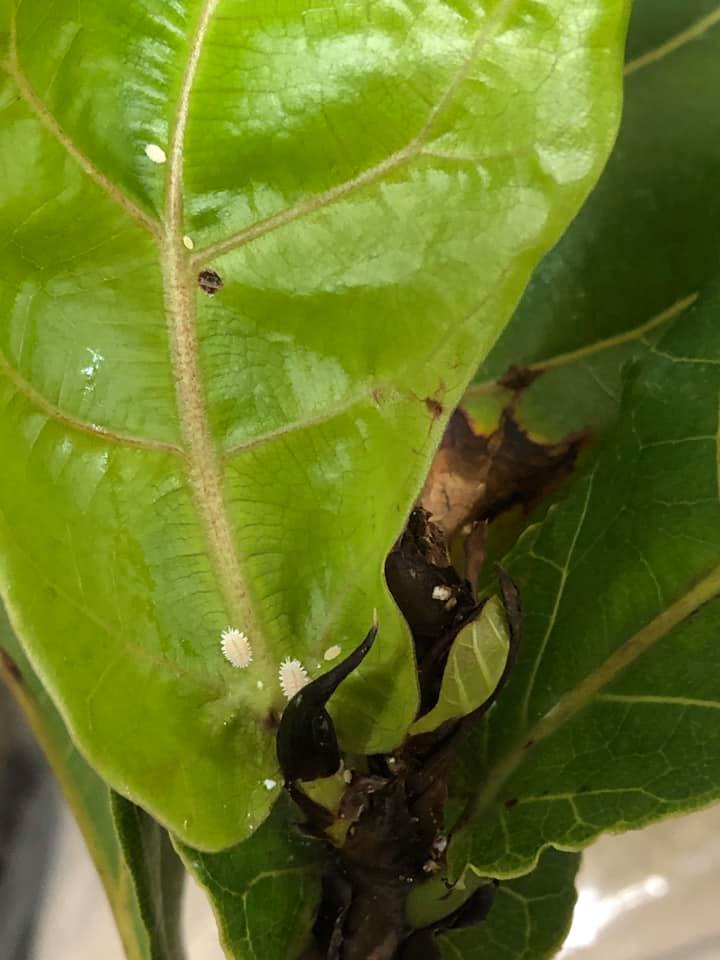

Insect infestations are easy to treat.
Use our Leaf Armor, designed for houseplants to protect against insects, bacteria, and fungus. (This product works just like neem oil but without the unpleasant smell! As an added bonus, the Leaf Armor also cleans and adds shine to your houseplant’s leaves.)
Spray all the leaves of your fiddle leaf fig thoroughly. Turn each leaf to spray the underside and don’t forget where the leaf meets the stem. Wait two weeks, inspect again, then repeat the spraying process if needed.
Brown spots on a new plant that show up a week or so after you move your plant are often from physical trauma. This is because the large leaves on a fiddle leaf fig are often damaged during a move and the bruises left of the plant will turn brown over time.
Often, these spots look like cracks or tears. Brown spots from physical trauma are certainly a bummer, but they do not need treatment and your plant will generally recover very well. The telltale sign of brown spots from physical trauma is that they appear on an otherwise very healthy leaf and plant.
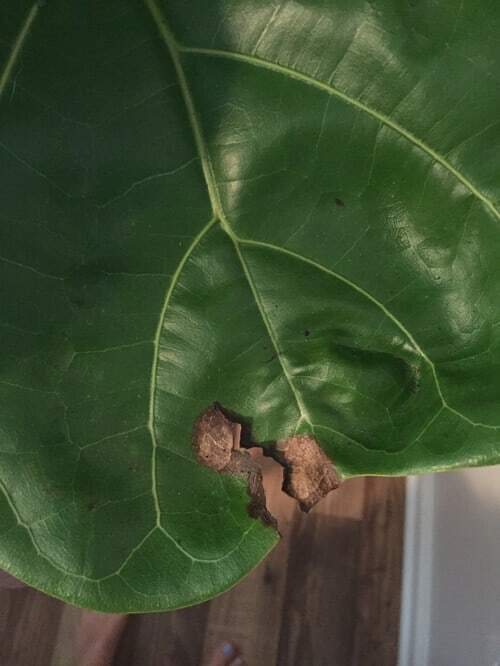

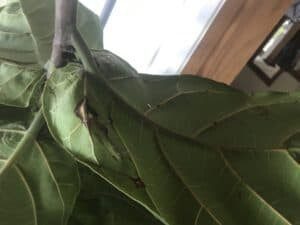

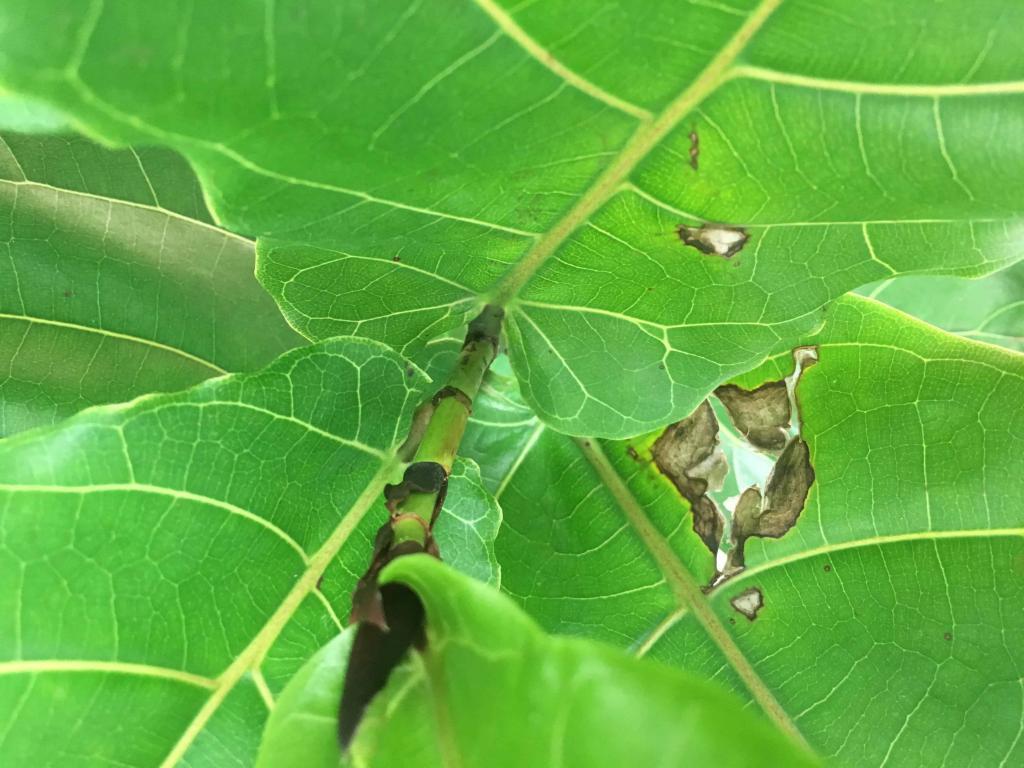

To treat brown spots from physical trauma, you just need to give your plant some time and TLC to help it heal. You can remove damaged leaves if you want, but if the problem is just physical trauma, a damaged leaf shouldn’t affect your indoor plant’s health.
If your plant gets too much direct sunlight, it can get a sunburn, which manifests as light brown spots that sometimes look bleached.These spots will appear predominantly on the top leaves and can even show some red and yellow coloring, depending on how recent the burn is. The leaves should be removed by pruning, and the plant should be relocated to a more protected location with a lot of indirect light, and minimal direct sunlight.
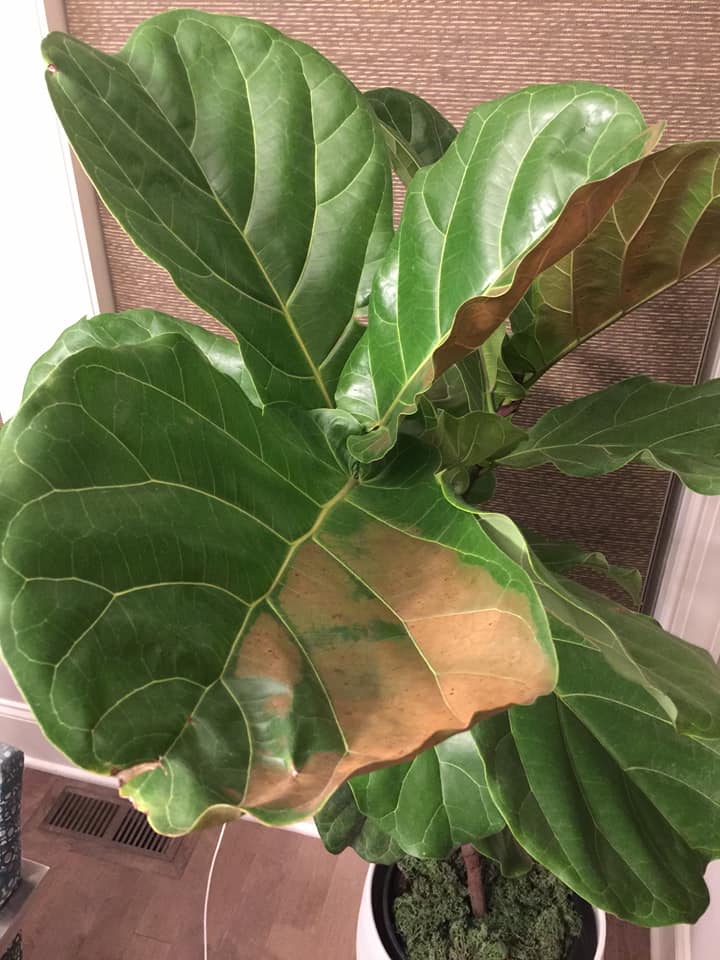

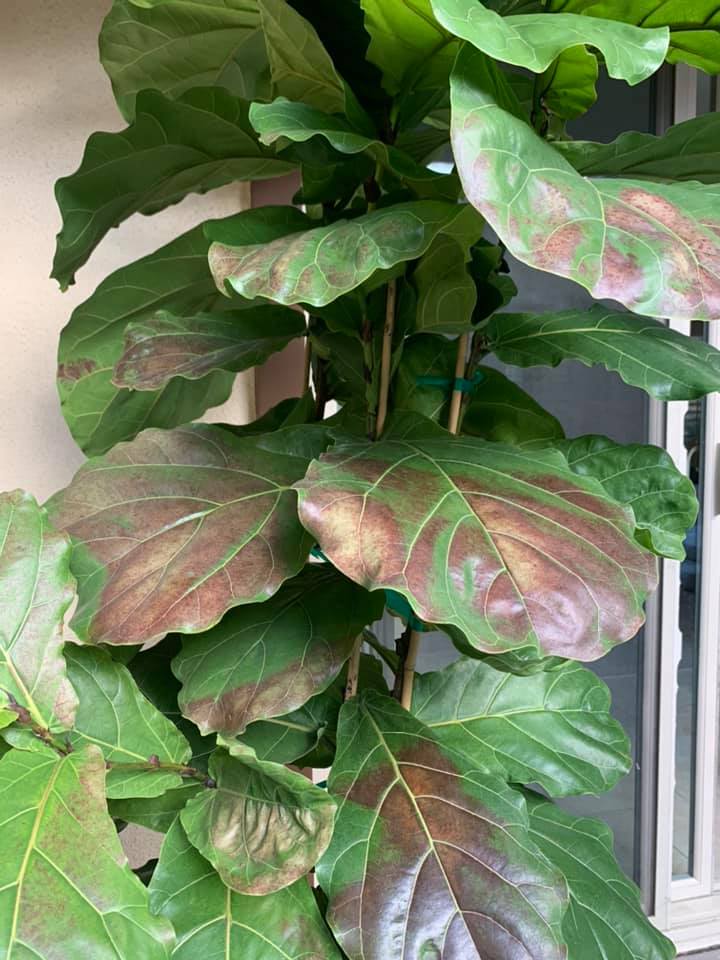

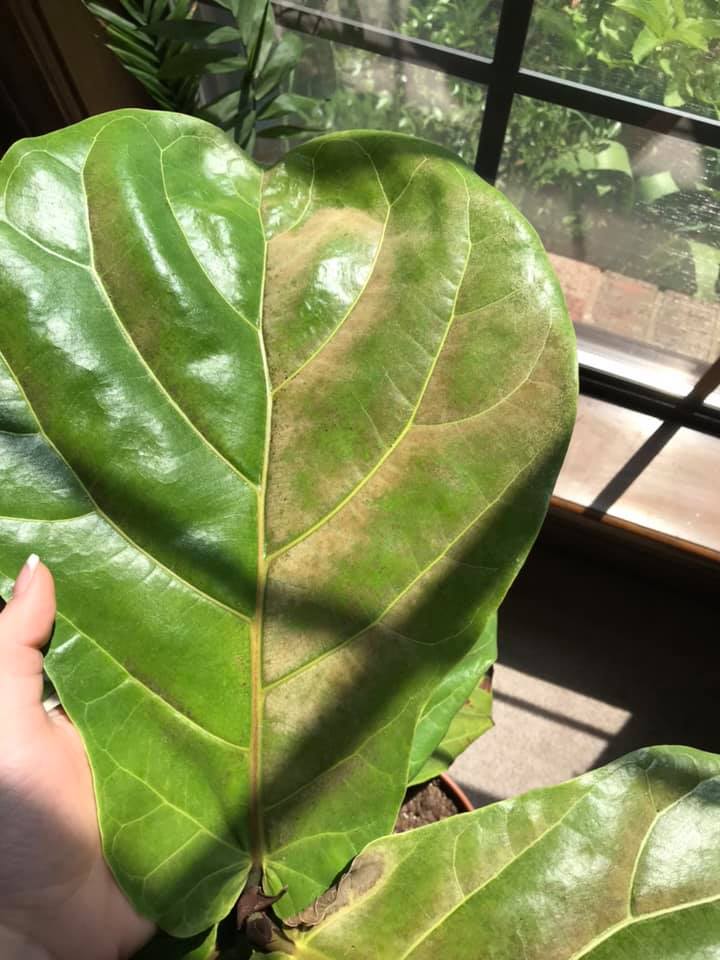

Even though fiddle leaf fig leaves are susceptible to sunburn, you are able to acclimate your plant slowly to direct sunlight. Read more and watch the following video about how best to acclimate your plant to full sun.
To treat your plant’s brown spots from a sunburn, you will need to remove the affected leaves with sharp, clean pruning shears, and remove the cause of the sunburn by moving the plant to a spot that gets less sun. Do not prune off all of the leaves. Try to only take off about 10% of the leaves at a time to prevent your plant from going into shock.
Once you’ve diagnosed the cause of your fiddle leaf fig plant’s brown spots, you’ll want to correct the issue in a hurry to help your plant make a full recovery.
To stop the brown spots and keep them from returning:
If your fiddle leaf fig still needs help or you would like to protect it in the future, we’ve spent over a year creating a treatment to protect your plant from root rot infections.
Our Root Rot Treatment is a natural plant bio-stimulator, enhancing your plant’s existing immune response and promoting growth.


It was designed with input from microbiologists, fiddle leaf fig growers, and botanists. It provides protection against the common Pythium, Phytophthora, and pseudo-fungi that cause root rot in fiddle leaf figs. It’s gentle and safe for your plant, designed to be used every time you water, along with fiddle leaf fig plant food. Get your Root Rot Treatment today on Amazon.
Unfortunately, damaged fiddle leaf fig leaves will not repair themselves. If the brown spots bother you, you can remove the entire leaf from the plant with clean, sharp pruning shears. Take care not to remove more than 10% of total leaves at once to avoid shocking your plant.
Proper care is the only way to avoid brown spots in the future. If your plant is suffering from root rot, you may need to repot it into a container with better drainage and well-draining soil to prevent excess water from causing root problems.
If a bacterial infection is to blame, correcting the watering conditions and waiting it out is your best bet. Very dry plants will recover after a good soaking and protection from too much heat.
Now that you’ve diagnosed the cause of your fiddle leaf fig plant’s brown spots and you have a Root Rot Treatment, you’ll want to make sure you keep your plant healthy in the future.
Make sure your plant has the proper soil and drainage, follow watering best practices, and make sure to fertilize with Fiddle Leaf Fig Plant Food each time you water to keep your plant strong.
Ficus Alii is a beautiful perennial ornamental fig and can be a terrific addition to your houseplant collection.
Ficus Alii is a beautiful perennial ornamental fig and can be a terrific addition to your houseplant collection. This plant is known for its deep green and bushy foliage. The long, narrow, and willowy leaves give it a classy look. The glossy gaze on the greenery makes it more eye-catching. With its growth, the Ficus Alii may divulge a very thick trunk with pronounced beautiful variegation, giving it a palm-like appearance.
This striking plant is called Banana Leaf Fig due to its lean verdures. Other names of the plant are Ficus Maclellandii and Ficus Binnendiijkii. The plant makes a bold statement in any bright room. The Ficus Alii is originally from Malaysia and India.
| Common Name | Banana Leaf Fig |
| Botanical Name | Ficus Alii, Ficus Maclellandii |
| Family | Moraceae |
| Origin | Asia, Malaysia, and India |
| Soil | Well-Drained and aerated |
| Humidity | 60%-80% |
| Temperature | 60F-80F |
| Sunlight | Bright indirect light |
| Pests | Mealybugs, Scales |
| Diseases | Root rot |
This plant has gained popularity because it adapts well to the indoor environment. This Ficus variety is very forgiving and tolerant, unlike its cousins. Although it can tolerate low light and adjust to any environment, it also needs care and attention like all other houseplants.
Ficus Alii appreciates moist soil, but it doesn’t like overwatering. This plant needs bright but indirect light to flourish; therefore, always put it in a location where it can receive plenty of light. Though it can adjust to low temperatures, the ideal healthy growth temperature ranges from 60°F-80°F.
Ficus Alii is easy to care for and a perfect beginner phenomenal houseplant. Keep reading this care guide for the Banana Leaf plant, especially if you are a newbie.
While Ficus Alii is a low-maintenance plant and isn’t fussy about watering, it doesn’t like sitting in water. So be careful about the watering frequency of the plant; allow the water to get soaked in the soil and dry out, then water again. After watering, make sure to drain excess water. This Ficus plant likes a reduced watering frequency in winter compared to the warm season.
Overwatering may cause the leaves to turn yellow, which makes them unattractive. Whereas brown leaf tips are a sign of underwatering; therefore, it’s better to water it in intervals. First, wait until the soil is completely dry, then water it again. Soil moisture can be accurately measured using a moisture meter, helping to establish a perfect watering scheme for your plant.
This Ficus plant prefers bright and indirect sunlight. Although it can do well in medium to low light, but the growth slows down, which you won’t like as a plant parent. Though the plant loves bright light, keep it away from direct sun, or it will burn its foliage. The best location for this fig is the east-facing window, where it can receive appropriate light for its growth. As the plant grows in the direction of the light, the weekly rotation will maintain its shape.
This hardy plant can thrive well in normal household conditions. However, it prefers above-average humidity levels between 60% to 80%. If an environment is too dry, try increasing the humidity by misting the plant regularly, or installing a humidifier will also work. If the plant isn’t provided with the required humidity, it can result in slow growth, brown leaf tips, and leaf loss.
Coming to the temperature, the plant is relatively tolerant to temperature fluctuations. The ideal temperature range for its growth is 60⁰ F to 80⁰ F, but the temperature shouldn’t drop below 45F. Never place the plant near a heater or AC; sudden and frequent variations in temperature can also affect the plant’s growth.
Periodic pruning and maintenance are required for the Ficus Alii plant as it can grow tall. Additionally, prune dead, damaged, and discolored leaves regularly to maintain the plant’s appearance and shape. The ideal time for trimming is the early spring season. Always use sharp and sterilized shears and scissors for the plant’s clipping.
Regular cleaning of leaves using a shine and cleaner spray prevents pest attacks and maintains the foliage radiant.
The Ficus Alii isn’t too picky about the potting mix; however, ensuring a well-draining, nutrient-rich, aerated soil will do wonders. The soil shall not get waterlogged, and the container shall have adequate drainage holes. This plant is happy in the potting soil that maintains a PH between 6.0 to 6.5.
Our optimally formulated soil mix is ideal for Ficus plants and will provide all the necessary soil features to boost your Ficus Alii health.
The Banana Fig needs regular feeding for its healthy growth; therefore, it is recommended to fertilize the plant once a month. Use our balanced all-purpose liquid fertilizer in the growing season, summer and spring. This plant doesn’t like being fertilized in the colder winter and fall months. Ficus Alii is sensitive to boron; consequently, avoid a fertilizer with chemical boron.
The Ficus Alii likes to be root bound and needs repotting every after 2 to 3 years. When the roots start to bulge out from the pot, it’s the ideal time to repot your Ficus Alii and the perfect season is spring.
After transplanting the plant into a new planter, water it thoroughly and place it in a bright, ventilated space.
The propagation of Ficus Alii is possible at home, but it can be a bit difficult for beginners. However, the plant can be propagated through stem cuttings and air layering. Both methods are equally successful.
Alternatively, the branch can be kept in water for root development. Keep the water jar in a humid place, such as the kitchen, and wait for the roots to come out. In 2 to 4 weeks, the cutting will grow roots and plant the cutting in a pot with preferred potting soil. Water the plant regularly and put it in a bright space for fast growth.
This plant is categorized as toxic for humans and pets. Eating it can cause vomiting, nausea, and loss of appetite. In case of consumption, immediately acquire medical assistance. If you suspect your pet has consumed the plant, immediately consult a vet. The sap of the plant is also toxic and may irritate the skin; therefore, always wear gloves when handling this Ficus.
Like all other houseplants, Ficus Alii can also be attacked by pests. Common pests that can damage this plant are mealy bugs, scales, and white flies. Common signs of pests outbreak are leaves turning brown to black. Upon identification, isolate your plant and apply insecticides and neem oil to the affected areas. In addition, you can prevent pests by cleaning the leaves regularly.
Regarding diseases, the most common enemy of Ficus Alii is root rot. It is caused by overwatering, so it’s important not to overwater and let your plant sit in water. Using well-draining soil, our root supplement, and an optimum watering schedule can prevent the disease.
Common symptoms of root rot are the yellowing of leaves and mushy roots. When you notice yellow leaves on the plant, remove them from the container and inspect the roots. In case of root rot, remove the affected areas and plant Ficus Alii in a new pot with fresh soil.
The most common problems of Banana Leaf Figs are;
Yellow leaves: Yellow leaves are a sign of overwatering. The issue can be prevented by watering the plant only when it needs, and the topsoil has become dry.
Leaf drop: This problem is caused by underwatering, which can be tackled by adjusting the watering frequency. An appropriate watering schedule is critical for the plant to thrive.
Brown leaves: The leaves of Ficus Alii turn brown due to overexposure to sunlight. Always place the plant in indirect or filtered bright light to maintain stunning foliage color.
Is Ficus Alii an indoor plant?
The Ficus Alii has impressive characteristics that make it an incredible houseplant. It’s a low-maintenance plant that can do well in normal conditions. It can quickly adapt the indoor conditions and sustain good growth.
How tall will a Ficus Alii grow?
The Ficus Alii leaves are thick, narrow, and slightly curved and hang downwards, and they can grow up to 3 inches to 10 inches long, while the plant grows up to 10 feet in height.
Why are the leaves falling off my ficus?
The most common cause of dropping leave in Ficus plants is environmental change. You will often notice that your plant drops leaves when the season changes as the humidity and temperature change resulting in leaf drops.
Ficus Alii is famous for its adaptive abilities. It has different qualities and appearance than other Ficus plants, making it the perfect indoor choice. This plant has long, slender thick olive-green leaves making it an eye-catching plant. It gives a classy look that can enhance any place, whether your home or office.
Here are some of our most popular resources on fiddle leaf fig care to help you grow the happiest, healthiest, and most beautiful fiddle possible!
The Fiddle Leaf Fig Expert eBook
Ficus Shivereana is a sensational and staggering magnificence featuring exceptional broad shiny oval leaves with sharp tips.
Ficus Shivereana is a sensational and staggering magnificence featuring exceptional broad shiny oval leaves with sharp tips. This exquisiteness is visible with variegated foliage with cream, white, and green freckled patterns. It is a half-breed of Ficus Elastica, also commonly known as marble plant, Indian rubber plant, and rubber tree variegata.
The variegated foliage of this stunning houseplant is striking light green with pinky-orange speckles. Every leaf is different from other; hence the speckling and marbling on the leaves represent an exclusive ambiance. The beautiful Indian rubber is a colorful houseplant that adds a unique vibe to any expanse. Its colorful foliage and startling size make a striking statement in the plant collection.
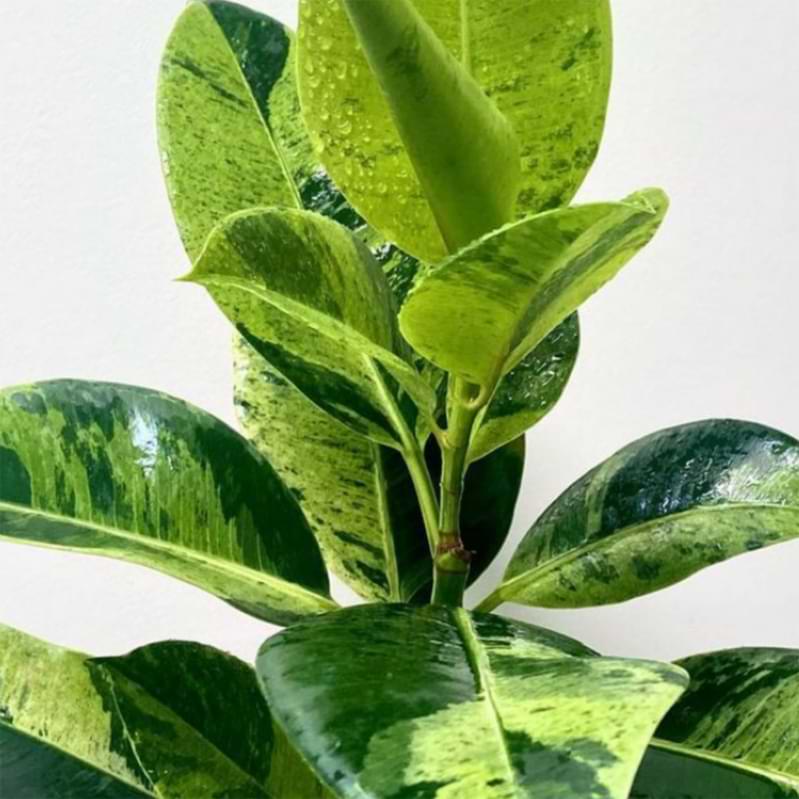

Ficus Shivereana is an easy-care houseplant, but it takes some time to adjust to the new environment; therefore, the stunning beauty needs extra love and attention. However, the plant can grow significantly and add a vibrant vibe to any place if provided with the proper conditions.
The Indian rubber needs regular watering to thrive. It appreciates the moist soil but hates soggy medium. The plant does best in the bright indirect sunlight and is happy in the aerated and well-draining soil.
The rubber plant develops into an alluring little tree if it gets the proper care and environment.
| Common Name | Ficus Shivereana, Variegated rubber plant |
| Botanical Name | Ficus Elastica Shivereana |
| Family | Moraceae |
| Origin | Southeast Asia |
| Soil | Well-Drained |
| Humidity | 50% |
| Temperature | 59F-77F |
| Sunlight | Partial sunlight |
| Pests | Mites, Aphids, Scale |
| Diseases | Leaf spot |
This stunning rubber plant is an evergreen beauty that can reach up to 2 meters indoors. However, it can grow up to 20 meters if planted outdoors. On average, the plant grows nearly 24 inches yearly. The oval-shaped leathery, shiny leaves can go up to 08-12 inches in length and 04-08 inches in width; however, the leaf size and variegation depend on the light the plant receives.
We recommend rotating the plant every 2 to 3 weeks to ensure that the entire plant receives equal light; that also aids the plant in forming an even shape.
Ficus Shivereana likes and flourishes on water, but only if it is provided with the right amount. Overwatering or underwatering can damage the plant. Therefore, always water according to the soil and weather conditions.
Watering frequency increases in summers, whereas the plant requires less water during the winter. The best practice is to check the plant weekly and inspect if the top layer of the soil is dry. You may verify the moisture level by feeling or using a soil moisture meter for an accurate reading. Weekly checking ensures the plant is only watered when needed, thus avoiding over or under-watering.
The quantity of water depends upon the plant size. As a thumb rule, one cup of water is necessary for each one-foot height of the plant, which means water one cup if your Ficus Shivereana is one foot high, two cups if the plant is two feet in height, and so on.
The light directly affects the leaf color and quality of the Ficus Shivereana. Therefore, positioning the plant at the optimum place is vital for foliage variegation. Ficus Shivereana prefers indirect, bright sunlight. Although the direct morning light is good for the plant, keeping it away from the direct afternoon sun is necessary as it is too harsh for the delicate leaves.
This Ficus plant can tolerate low lighting conditions; however, constant deficiency of optimum sunlight may cause leaf discoloration and fall.
Therefore, it’s ideal to place it near a south-facing window where it receives bright and medium light throughout the day, encouraging its growth.
As this plant has originated from a tropical region, it appreciates humidity for its health and evolution. 50% humidity is ideal for Ficus Shivereana, but it’s a relatively hardy plant and can survive in less humid conditions. If the plant is positioned in a dry space or the weather conditions get hard for Ficus, place a humidifier or pebble tray near the plant to provide it with the required humidity levels.
While the ideal temperature range for the Indian rubber plant is between 59° F to 77° F, the plant thrives typically at temperatures on the warmer side.
As it’s a tough plant, it can tolerate minor fluctuations in temperature. It can do sound under varying temperatures, but providing the ideal warmer climate is necessary to keep the plant happily thriving. In the winter, the plant’s surrounding temperature shall not go below 50° F.
Like every other plant, the Ficus Shivereana also needs maintenance and care. The plant pruning is done when it reaches its full growth and potential. Trim the leaves properly with clean pruning shears or scissors to refine the plant’s shape.
The ideal time for pruning is the growing season which is spring and summer. But remember to prune the plant when required because too much pruning can hinder its growth. Hence avoid unnecessary pruning.
Also, give a periodic wipe down with neem oil and apply Houseplant Leaf Shine Spray to enhance the foliage appearance. An occasional shower, removing dirt and pests, can do wonders for your Ficus Shivereana. Water at room temperature is ideal for watering, and the excess water shall not remain in the pot. Showering the Ficus Shivereana is not a great idea if the potting soil is compact.
We recommend rinsing your plant only in the morning and on a sunny day to let the leaves dry entirely and ensure there is no direct sunlight hitting the plant after a bath.
Focuses prefer well-draining soil and benefit from a customized soil mix containing draining and moisture retaining constituents. A correct potting mix is essential for your plant growth and health. We have developed a perfect soil recipe for Ficus plants that will do wonders for your Ficus Shivereana.
The soil PH for the marble plant should be between 6.0 to 6.5 as the more acidic soil will cause the plant to decline.
Drainage plays the most critical role, and plant enthusiasts shouldn’t ignore it. The soil should be well draining and aerated as overwatering may cause irreversible damage to your plant.
A good potting mix also has essential nutrients for your plant’s growth; therefore, use a soil medium rich in nutrients.
The Ficus can do well without fertilizers, but using little fertilizers can enrich its development, especially during the growing season. Generally, the potting soil has enough nutrients for the plant’s growth, but the nutrients condense with time when the plant grows; for that reason, the Shivereana needs fertilizer.
The best fertilizer for Indian rubber plants is liquid fertilizer, and we have a customized liquid fertilizer formulation to boost the growth of your Ficus plant.
The Ficus Shivereana must be repotted every year in the spring as it’s the start of the growing season, and the plant needs fresh nutrients. And what will be the best way to add nutrients to soil other than repotting?
If your plant is ready for repotting, the following steps must be followed to properly transfer it to a new planter.
The Marble plant is native to tropical regions, so it is easy to grow and propagate. You can use the leaf or stem cutting method to propagate this plant. It has a high rate of success through this method.
To propagate the plant, you need a few tools and supplies.
Like other common Ficus plants, the Shivereana is also toxic to humans and pets due to its poisonous sap. This poisonous sap causes dermal and gastrointestinal irritation in your pets. Therefore, keeping your furry friends and kids away from this plant is imperative.
If you notice any symptoms, immediately consult the doctor.
The Ficus Shivereana is a delicate plant that different pests can bombard. Common pests that can outbreak the plant are spider mites, aphids, and scales. These tiny insects may cause the leaf curling in the Ficus plant.
When you spot curling leaves, inspect the plant, mainly the underside of the leaves. Spray the Shivereana with a soap water mixture or shower it to wipe out all insects. Neem oil is another good solution to this problem.
The marble plant is also prone to diseases such as leaf spots and cold injuries.
Leaf spot: When the plant is attacked with leaf spot disease, the leaves start getting yellow and brown spots. Also, leaf spots caused the falling of leaves.
The leaf spot disease may be caused by pest attack and retention of water on leaves for an extended duration. If you see the symptoms, reduce the misting frequency, and prune the affected leaves.
Cold injury: In case of cold injury, brown blotches on mature leaves and young leaves appear distorted, brown, and puckered.
When the plant is exposed to too much cold, it can be attacked by this disease. Therefore, maintain the temperature above 50° F to avoid cold injury to the plant.
Some common problems that this Ficus plant can encounter are;
Overwatering: The plant needs water to nurture, but only when the top soil is dry. The plant is overwatered, especially in cold climates, which can cause many problems, such as leaf discoloration. When you spot the signs of overwatering, stop giving it water until the soil gets dry.
Leaf burn: The Shivereana must get a generous amount of indirect light, but it harms this plant and can cause leaf burn when exposed to direct sunlight. Leaf burn is a severe issue and may kill the plant. Therefore, always keep the plant in indirect bright light.
Dropping leaves: overwatering and cold cause the leaf dropping. If you notice that your plant is shedding leaves, look for the reasons and fix them as soon as possible. Always keep the plant above 50° F and water it only when the top layer of soil is dry.
Is Ficus Shivereana a rare plant?
The Ficus Shivereana is a unique and rare variety of the Ficus family. It has light green foliage with pinkish-orange flecks, making it extremely attractive. The plant appreciates the indoor environment and thrives well in balanced, bright indirect sunlight.
How can I make the rubber plant grow faster?
If you want your rubber plant to grow fast, the key is balanced light and water. Your plant will be happy and healthy if you provide the proper moisture and sunshine. If the plant needs lighter water, it will give you hints, so being a caring plant parent, keep an eye on the plant if it displays any changes.
Do rubber plants like bathrooms?
The rubber plant will only be happy in a bathroom where it receives adequate light and humidity in the air. So you can keep your plant there if your bathroom has enough light and humidity.
Should I mist rubber plants?
Since misting increases the humidity, the rubber plants like it as they are native to topics. Therefore, the misting benefits the plant, especially in the warmer atmosphere. Regular misting also helps to prevent mites and other insect attacks; however, do not let the water stay on leaves for longer durations as it can cause fungal diseases.
Ficus Shivereana is a tremendously gorgeous, rare rubber plant, and thus it needs care, love, and attention. Nevertheless, you can grow this fantastic houseplant both indoors and outdoors.
The beautiful glossy, leathery and shiny leaves are the zenith of the plant that can make any place visually alluring.
If you also want to make a remarkable statement at your home, bring this exquisite beauty home.
Here are some of our most popular resources on fiddle leaf fig care to help you grow the happiest, healthiest, and most beautiful fiddle possible!
The Fiddle Leaf Fig Expert eBook
Ficus Elastica Tineke is an intriguing and stunning houseplant highlighting large glossy oval and leathery leaves.
Ficus Elastica Tineke Care and Propagation Guide Read More »
Ficus Elastica Tineke is an intriguing and stunning houseplant highlighting large glossy oval and leathery leaves. The foliage is blushing with green and off-white variegation featuring pink veins. It is also commonly known as a variegated rubber plant because it produces milky white latex, which can be used to make rubber.
The fascinating Ficus Elastica Tineke features remarkable foliage with deep green in the middle, light green before the leaf border, and the pale cream at the edges is something to drool over. The beautiful Ficus Tineke is a joyous, colorful houseplant, and with its thick and lush leaves, this astonishing beauty makes a soft but striking statement in any warm and bright room.
| Common Name | Ficus Tineke, Variegated rubber tree |
| Botanical Name | Ficus Elastica Tineke |
| Family | Moraceae |
| Origin | Asia |
| Soil | Well-Drained |
| Humidity | 40%-50% |
| Temperature | 60F-70F |
| Sunlight | Partial sunlight |
| Pests | Mites, Aphids, Scale |
| Diseases | Root rot |
Gratefully, the Ficus Tineke is a comparatively low-maintenance plant; therefore, it will blossom if offered the correct placement, light, and water. The plant loves slightly moist soil; however, avoid overwatering to prevent problems like root rot. Please place the plant where there is a perfect balance of shade and sun, such as on stairs and corners.
Typically, it is grown as a houseplant, but it can thrive indoors and outdoors in the right conditions with appropriate care. If you are a beginner houseplant enthusiast, this is an ideal plant for you.
Please keep reading our comprehensive care guide to raise and flourish this plant at home.
Ficus Elastica Tineke is a fast grower and raises to 24 inches annually. It has thick glossy leaves that can grow up to 12 and 5 inches in width. If it is grown indoors, it can grow to heights of 5 to 6 feet, and with the proper growth conditions outside, this plant can get enormous. However, this extraordinary beauty is very manageable indoors in its contained space.
Regarding watering, the Ficus Tineke loves a consistent watering schedule. Although it likes moist soil; however, please don’t kill it with over watering as it’s a more significant issue than underwatering. Additionally, if the plant is left in standing water for a continued period, it can lead to root rot which could be irreversible damage in most cases.
The rubber plant appreciates if the top few inches of the potting mix is dry in between watering. Therefore, watering once every one or two weeks during the growing season is sufficient, but it also depends on the temperature, light, and humidity. Always check the soil’s moisture level and dampness before rewatering.
To check the moisture level of your soil, insert a 3-in-1 Moisture Meter half way down into the soil, half way between the trunk and inner edge of the pot. When the meter reads a 4 or below, it is time to water.
The rubber plant likes bright and indirect sunlight that mimics its natural habitat. To keep variegation and coloring on the plant, ensure it gets bright indirect light. The provision of the perfect light is the biggest challenge for plant parents. Too much sunlight may scorch the foliage, and low light conditions fade the color and variegation, reducing leaf growth and browning of leaf tips, making your plant unattractive and gangly.
The Ficus Elastica Tineke appreciates the morning sun and if you want to promote reddish pink leaves, let it sit for one to two hours in the morning light, which makes the plant happiest but remember to avoid direct exposure to intense sunlight. If you place the plant in an east-facing window, it can do wonders for your plant, and don’t forget to rotate it from time to time for its balanced growth.
The rubber plant is native to regions with humid conditions throughout the year, which is why it loves high humidity conditions. However, for the healthy growth of the plant, a minimum of 40-50% humidity is required.
Avoid placing the plant in drafty places, for instance, under open windows and air vents in winter. Additionally, place a humidifier near the striking rubber beauty to maintain the required humidity indoors. The pebble tray is another reasonable alternative for the plant’s aspiration of a humid atmosphere.
As a typical tropical species, this rubber plant appreciates warm temperatures. The ideal temperature range for it is from 60 to 70 degrees Fahrenheit. Avoid sitting the plant at a temperature lower than 55 degrees Fahrenheit to prevent it from any damage.
As a houseplant, the Ficus Elastica Tineke doesn’t need much maintenance, but a mature plant does need pruning to maintain its shape and size.
The best time for pruning is summer and spring, but it can be pruned throughout the year. Use sharp tools such as our Pruning Scissors and Shears for trimming it above nodes. To promote new growth, leave 2 to 3 leaves at each stem when growing indoors; for outdoors, leave at least 5 to 6 leaves on each branch.
Always use disinfected tools while working on your Ficus Elastica Tineke Plant.
Ficus Tineke is not onerous when it comes to potting medium. This variegated rubber plant thrives in well-draining, light, and most soil. However, it can also tolerate sandy and loamy soils. The plant loves slightly acidic or neutral soil and only needs water when the top inches of soil are dry.
For healthy plant growth, use a pot with drain holes and a balanced soil mix that promotes its growth. You can use a good aroid mix from the market or use one at home by combining the following components
Premium cacti mix contains coarse grit for better drainage, controlled release fertilizer, and essential minerals like calcium and potassium. The orchid mix helps encourage aeration, and charcoal balances the soil’s Ph level. Lastly, perlite forms spaces around the soil to allow aeration and free water flow around the root system to prevent it from root rot.
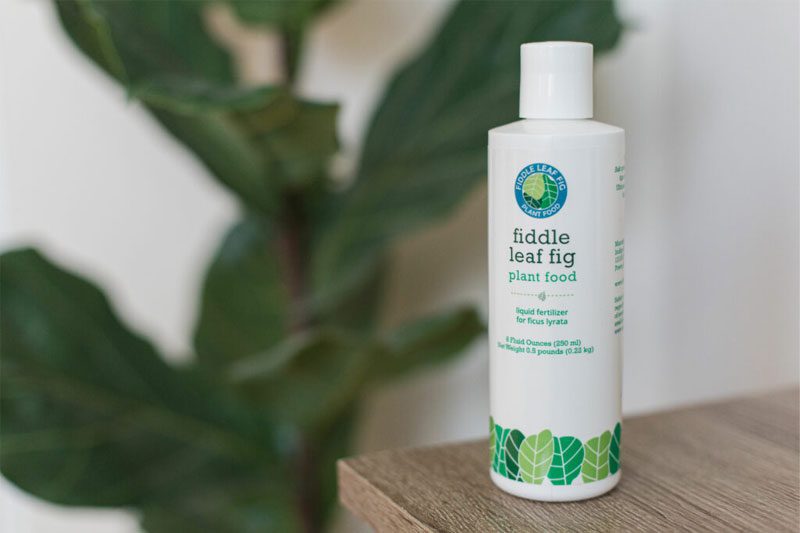

Ficus Elastica Tineke requires light fertilization, but it needs some food to sustain healthy growth, and we recommend feeding the plant during the active growth season, spring and summer. Fertilizing the Ficus Tineke monthly will boost the growth and enhance the foliage color.
Fiddle Leaf Fig Plant Food is certified 3-1-2 NPK ratio which is perfect for ficus elastic tineke plants. Safe to use each and every time you water, your plant will receive the nutrients it needs to grow and sustain its beautiful leaves.
The rubber plant needs to be repotted every after one or two years. This plant loves being slightly pot-bound; therefore, wait until it shows the signs of repotting. The right moment to repot the plant is when the soil doesn’t retain the moisture when you water it, and water leaks straight through the bottom holes.
For repotting, you need a loose and well-draining potting mix with all the right and required ingredients. Use a planter that is only 2 inches larger than the current pot.
Repotting for the plant is vital as it lets the roots constantly grow, and fresh soil revives the plant.
The Tineke can be propagated through air layering or from cuttings. The best time to reproduce your houseplant is the growing season. Here is how you can promulgate your variegated rubber plant.
The air layering technique allows you to turn the top portion of the stem into a new plant. This method causes nutrients in the plant’s vascular system to accumulate at a stem cut that grows new roots.
This is a great and easy way of propagation in which you can use trimmed-off pieces of Ficus for growing a new plant. The ends of the branch with new growth and a portion of healthy stem can be used for this method.
The Ficus Tineke is toxic to humans and pets. Keep the plant away from children and pets, and make sure that no one should consume it. It can cause severe issues if ingested by humans and pets. If you notice vomiting or irritation after contacting the plant, immediately get medical help.
Also, ensure to wear gloves while pruning and maintaining the plant.
Like any other houseplant, the Tineke can fall vulnerable to aphids, mites, and scale.
Signs: Common signs of pests and symptoms are tiny holes in leaves, slimy and sticky residue, and yellowing of leaves.
Prevention/Treatment: Regularly wipe off the leaves with a damp towel to knock out the minute signs of pests. If the symptoms of infestation are there, immediately isolate your plant. Apply neem oil on the affected areas or spray soap water regularly until pests are treated.
The most common disease that Tineke suffers from is root rot. Root rot happens because of poor drainage and overwatering.
Signs: If your Ficus is attacked with the disease, it will show signs of yellowing of leaves and mushy stems and roots.
Treatment/Prevention: If you notice the symptoms. Immediately report the plant in a fresh, well-aerated, and well-draining potting mix after removing the infected parts. You may also apply fungicide in the soil mix to prevent a recurrence.
Regarding problems, the Ficus Tineke may be a bit fussy. However, the plant will give clues if there is anything wrong with it.
Yellow leaves: The yellow leaves are the signs of overwatering. If you notice yellow leaves on your plant, inspect the soil to see if it’s too wet or soggy. Then, reduce the watering rate and allow the soil to dry out.
Leaves losing color: If your Tineke’s leaves are losing color and have become paler, the plant is not receiving adequate light. Move the plant to a bright area with enough sunlight.
Brown tips: The tips of the Ficus leaves will turn brown and crispy if they are underwatered or lack humidity. If you notice these symptoms, adjust the watering frequency and raise the humidity level indoors.
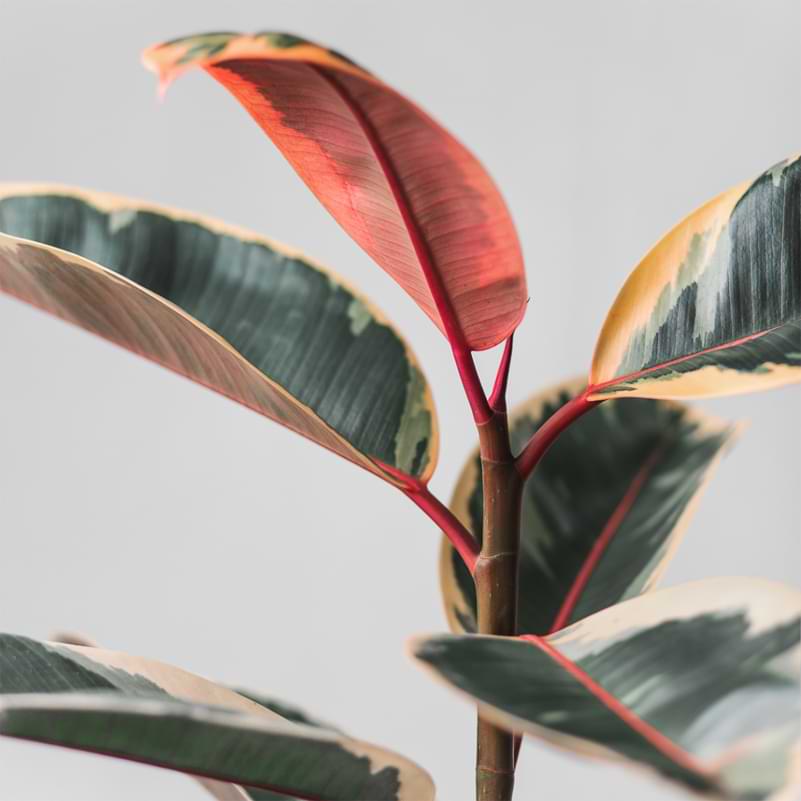

Is Tineke the same as Ruby?
Ruby has variegated cream and green leaves that maintain a deep pinkish to red hue, while Tineke has pink veins, and the leaves have a variegated amalgam of light green, dark green, and cream color.
How long do rubber plants live?
Rubber plants can live up to 10 years with the proper care and attention.
Can we keep rubber plants in the bedroom?
The rubber plants can be kept in a bedroom where they can help remove toxins in the air and fight against parasites and tropical diseases.
Ficus Tineke is a gorgeous plant with conspicuous foliage that makes it a perfect houseplant. In addition, it’s an ideal plant for plant fanatics due to its low maintenance. It can prosper both indoors and outdoors if provided with the right conditions.
If you want a unique statement piece for your living, there isn’t any other perfect plant than Ficus Tineke.
If you have questions or need support for your ficus tineke, come join our online community by clicking below!